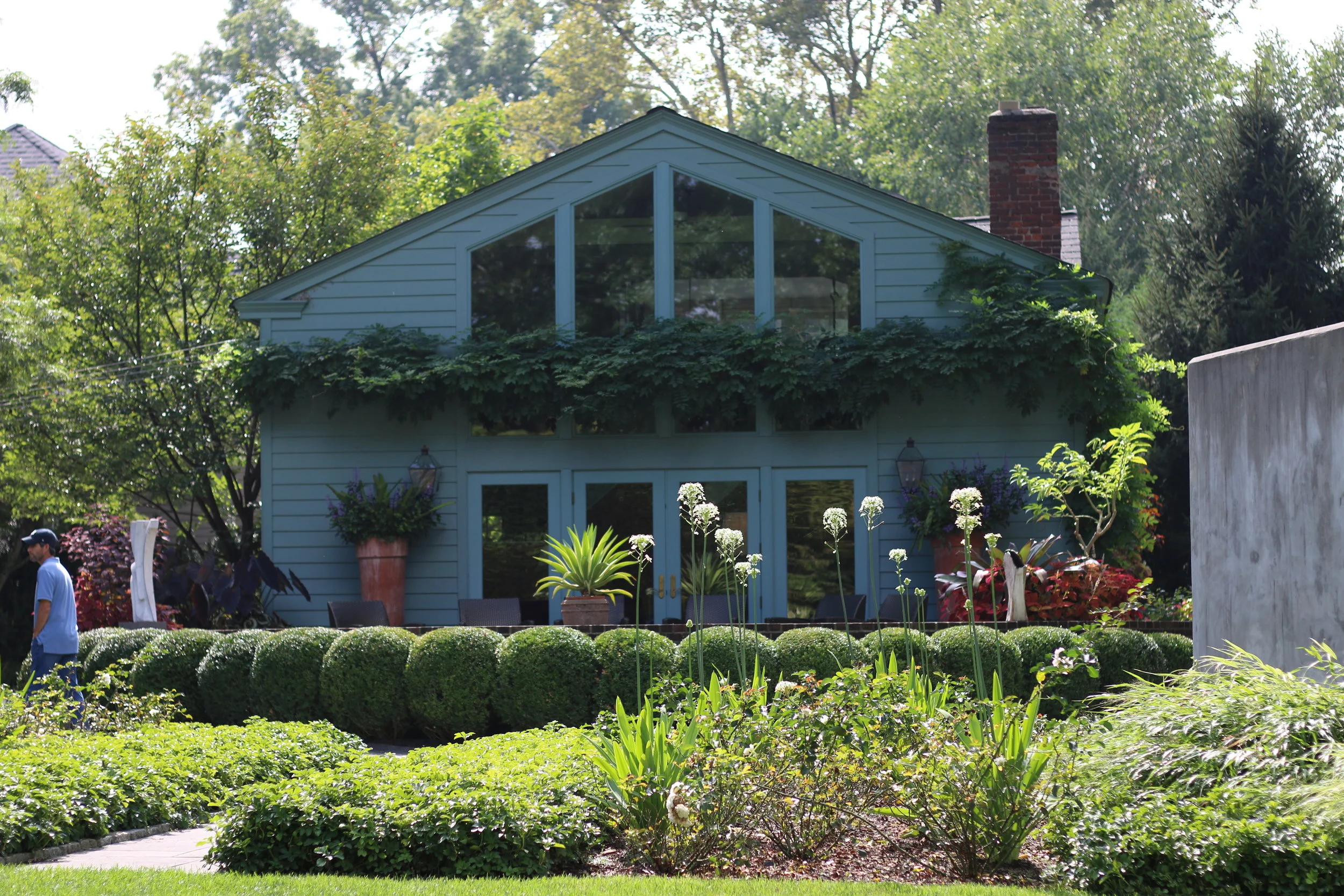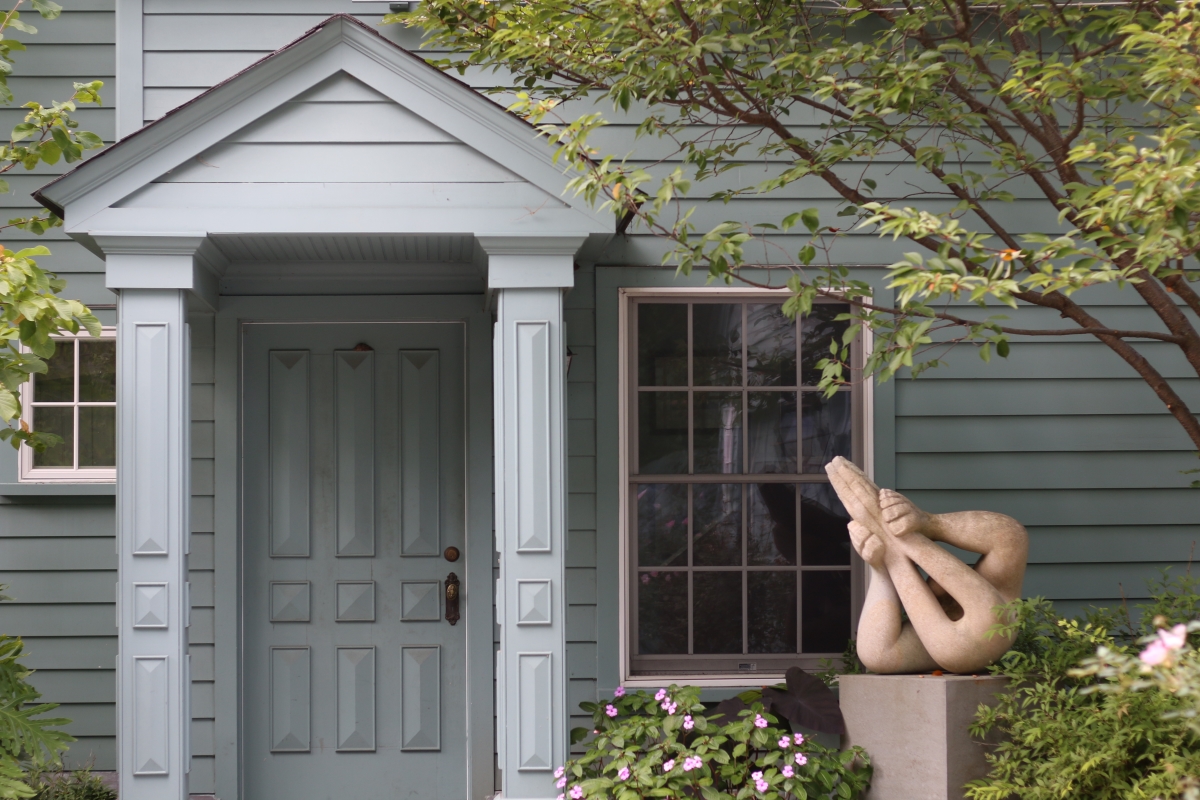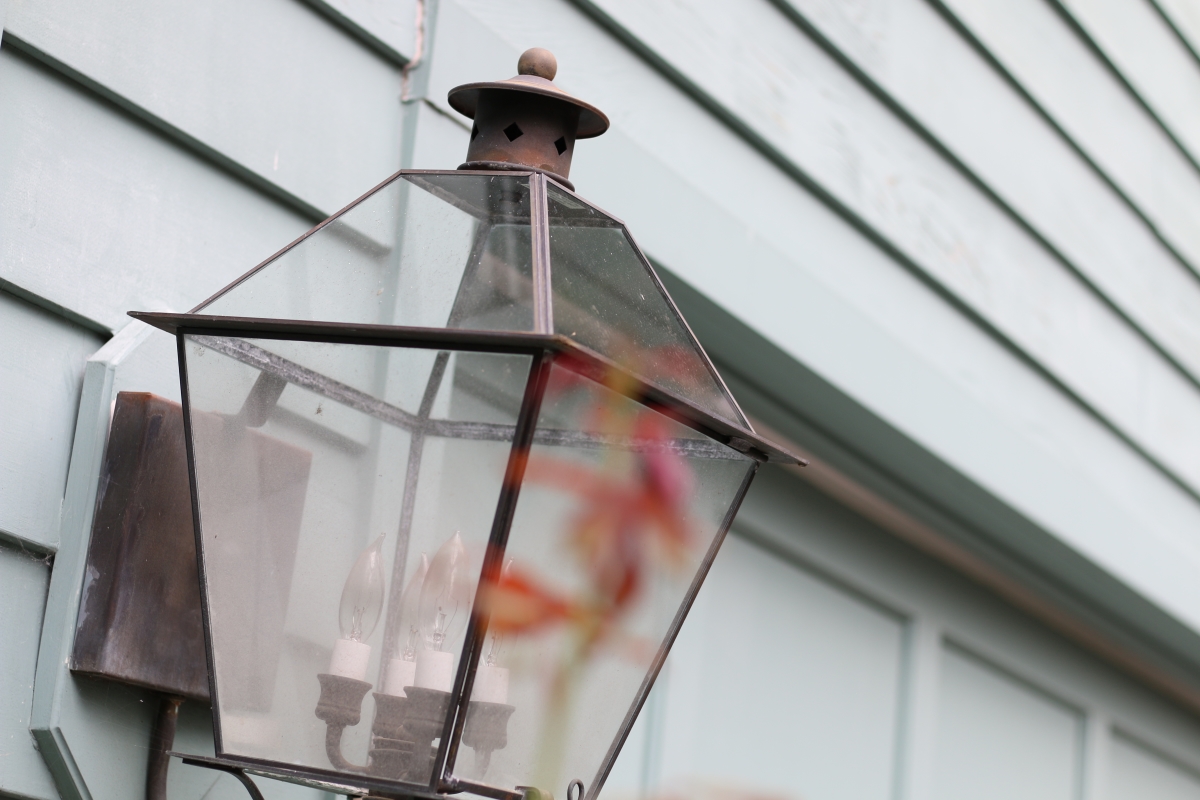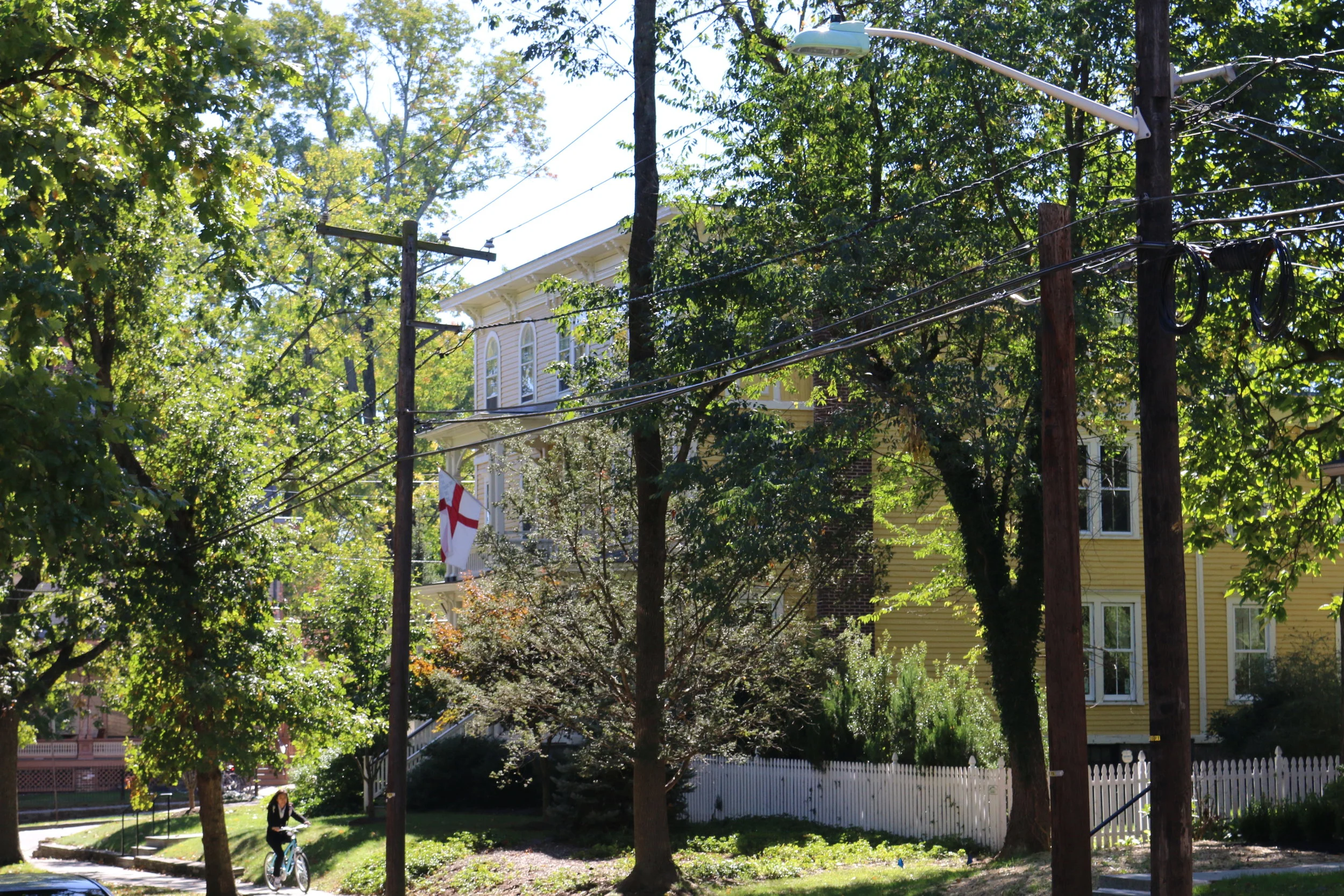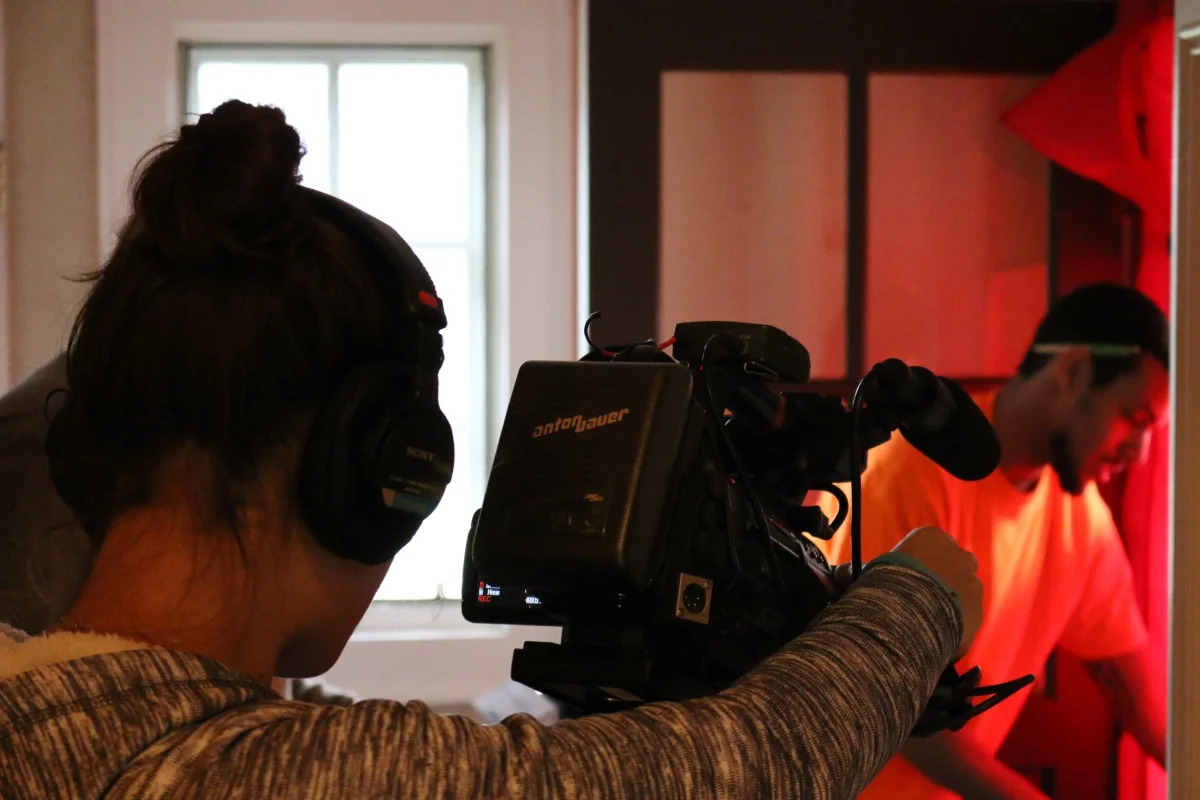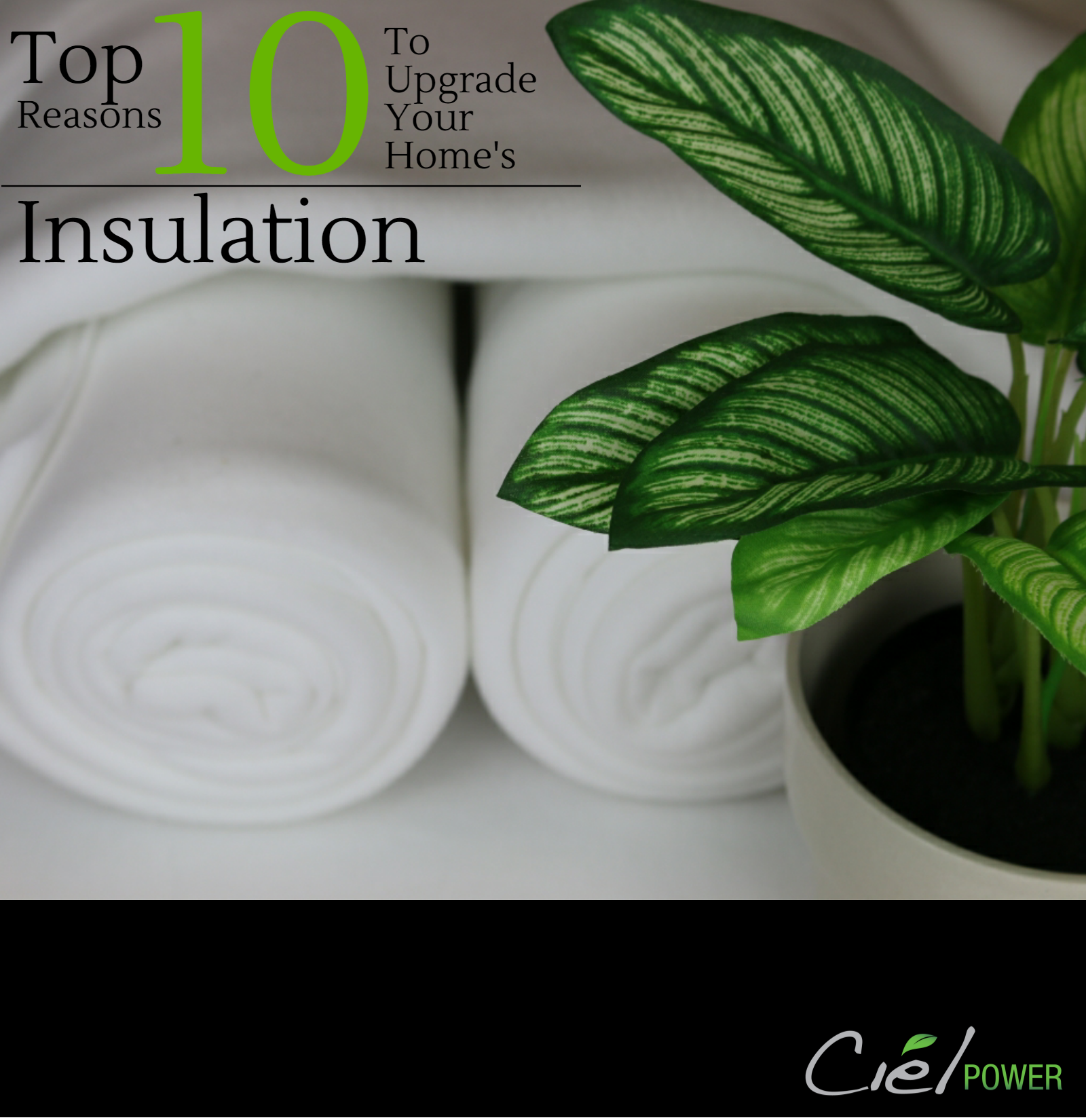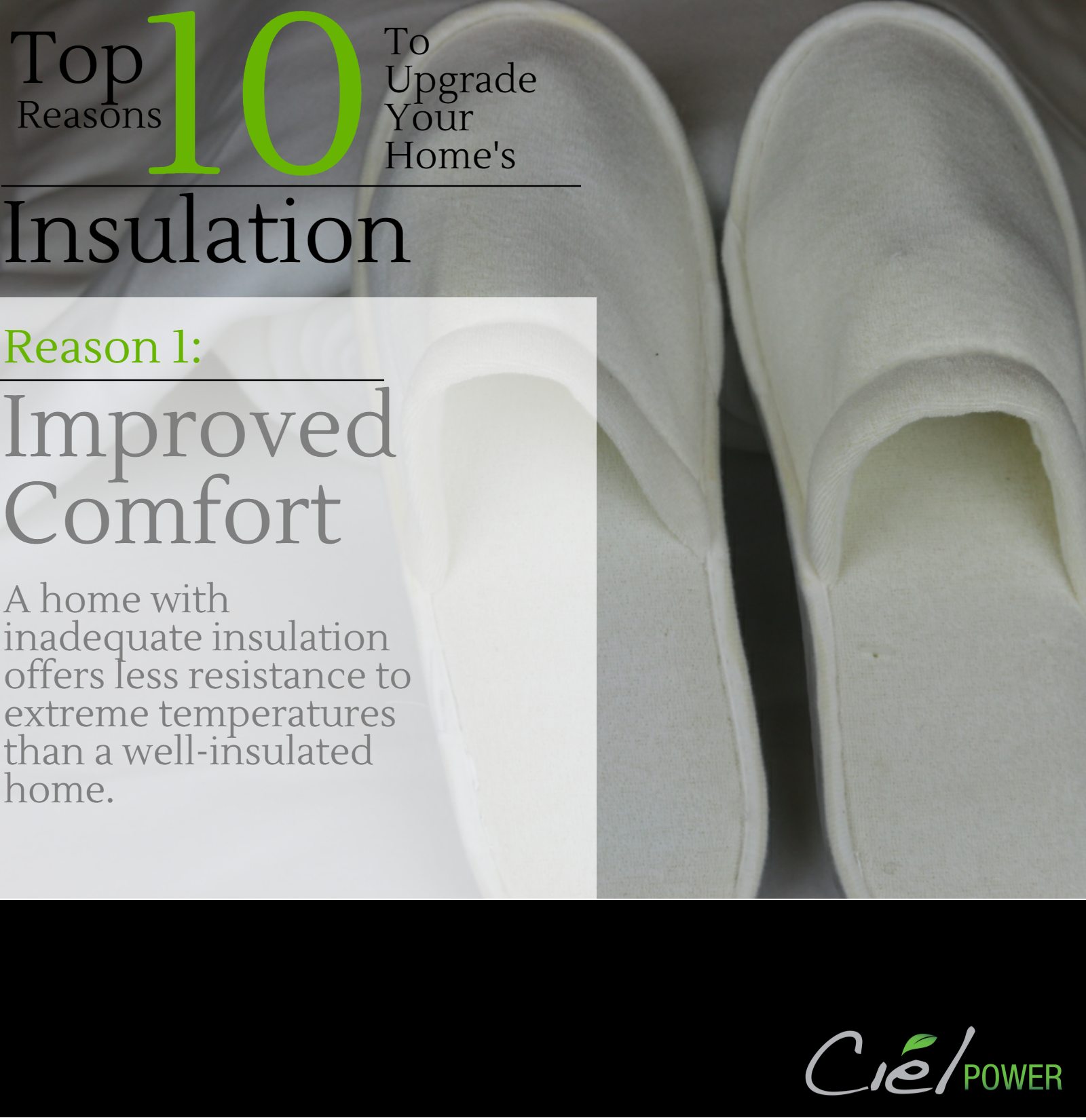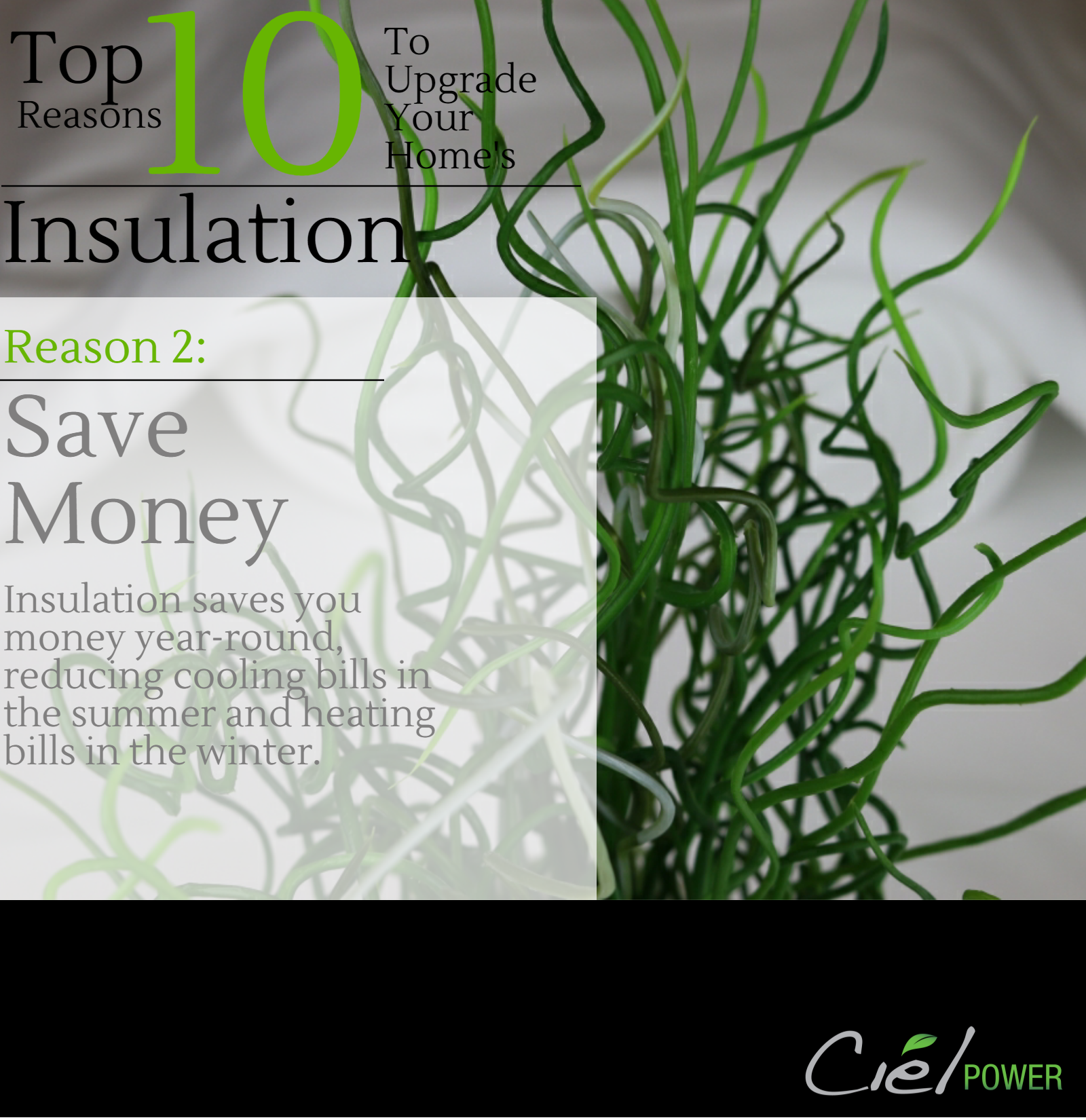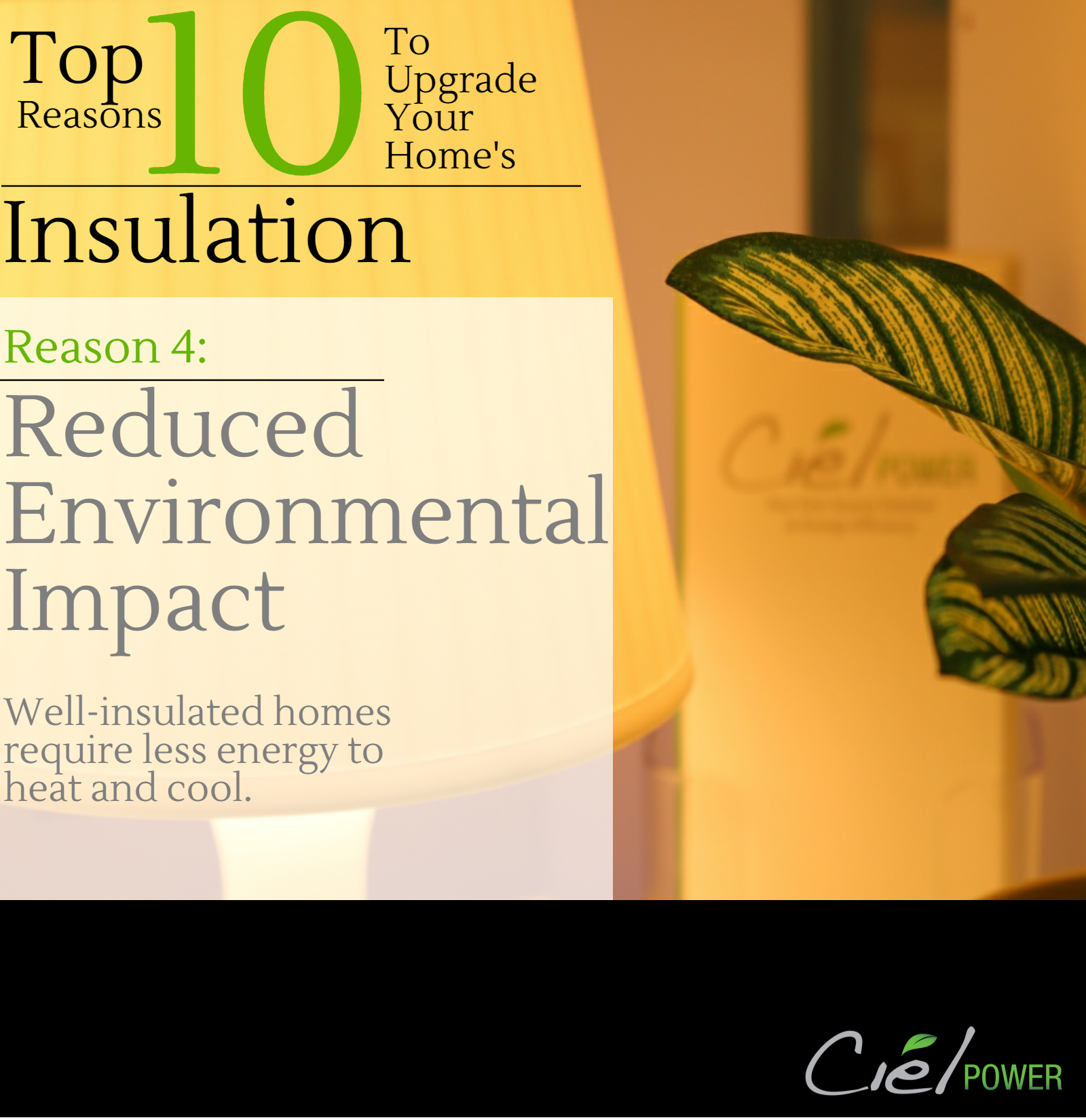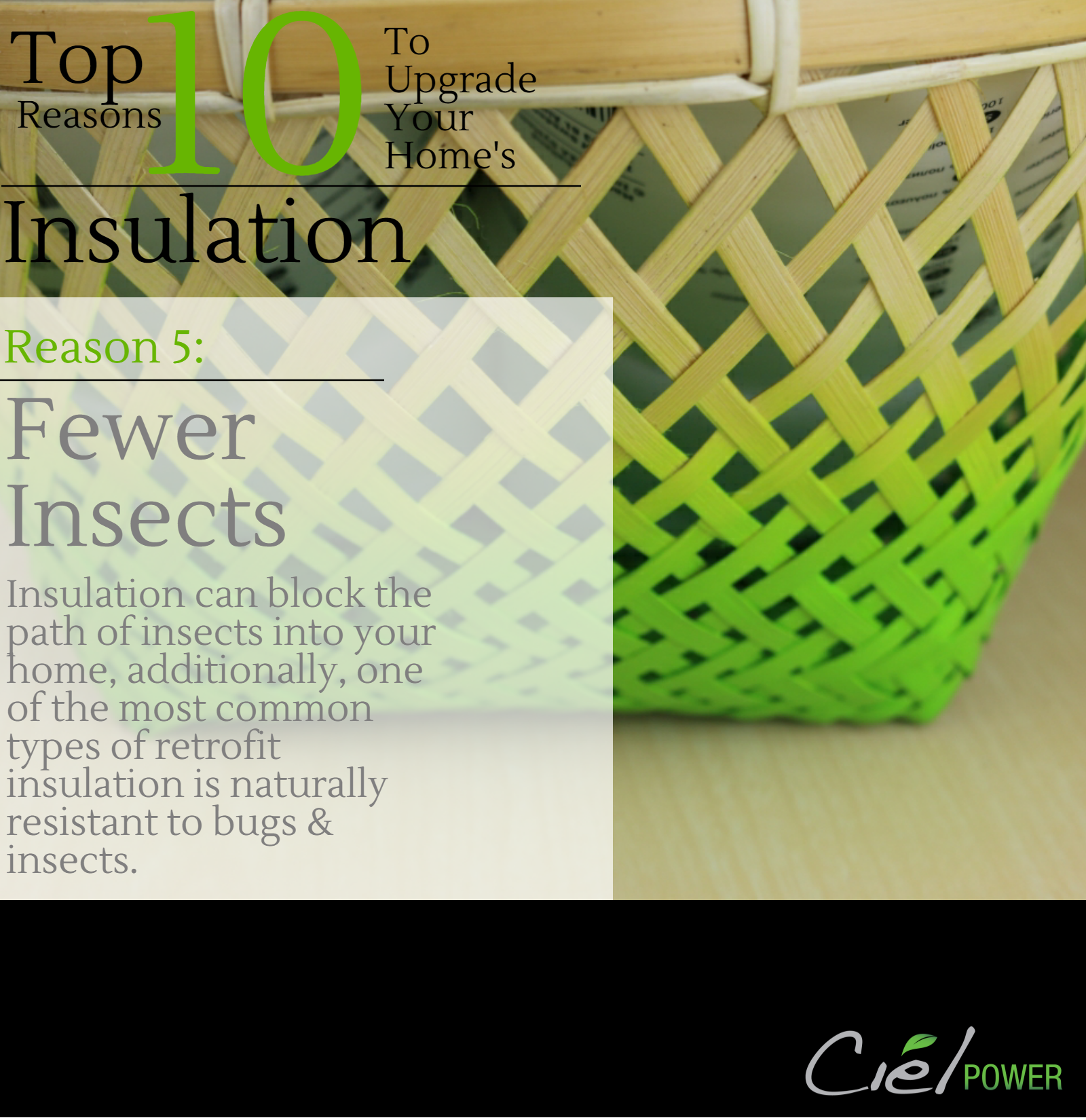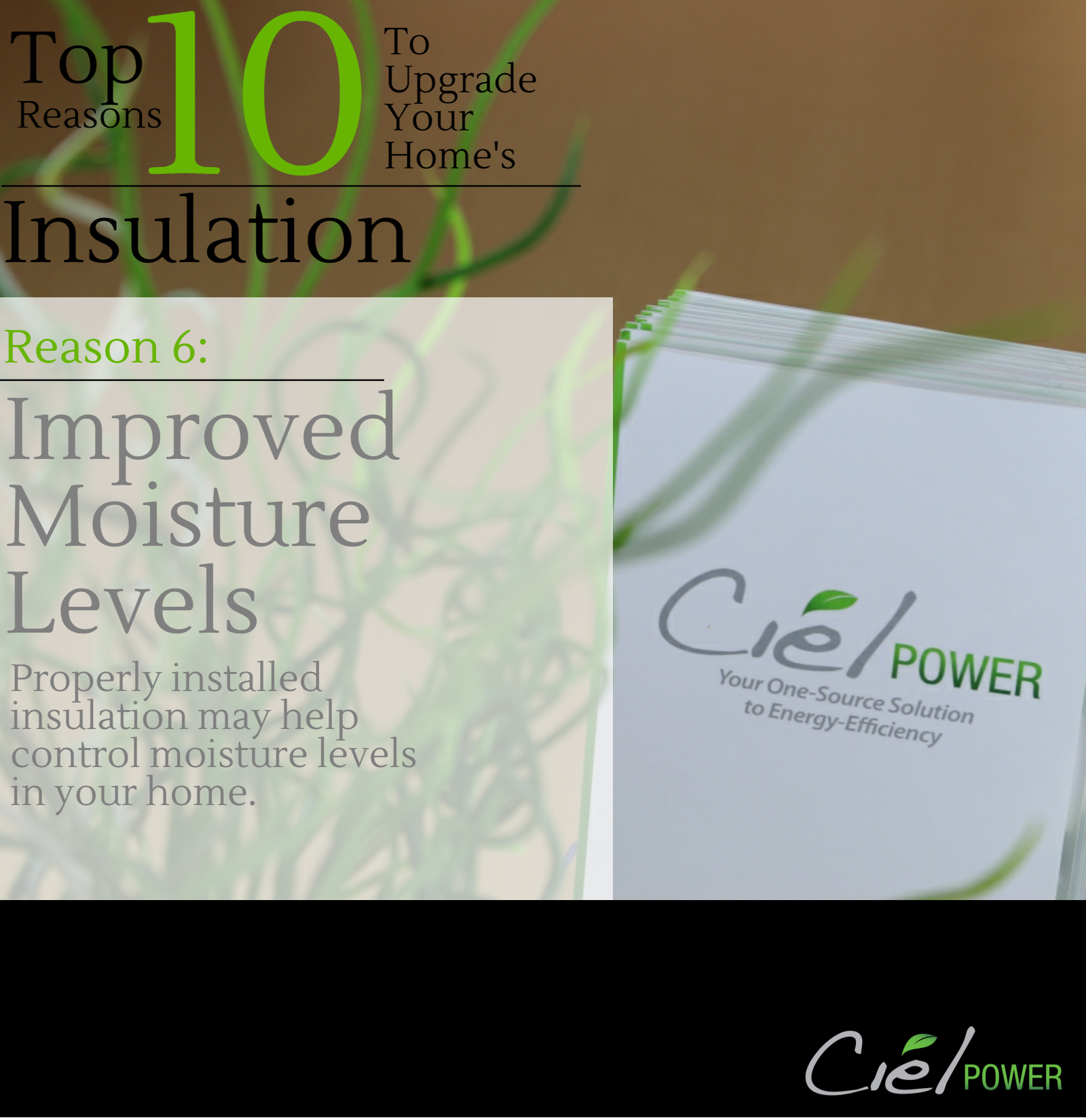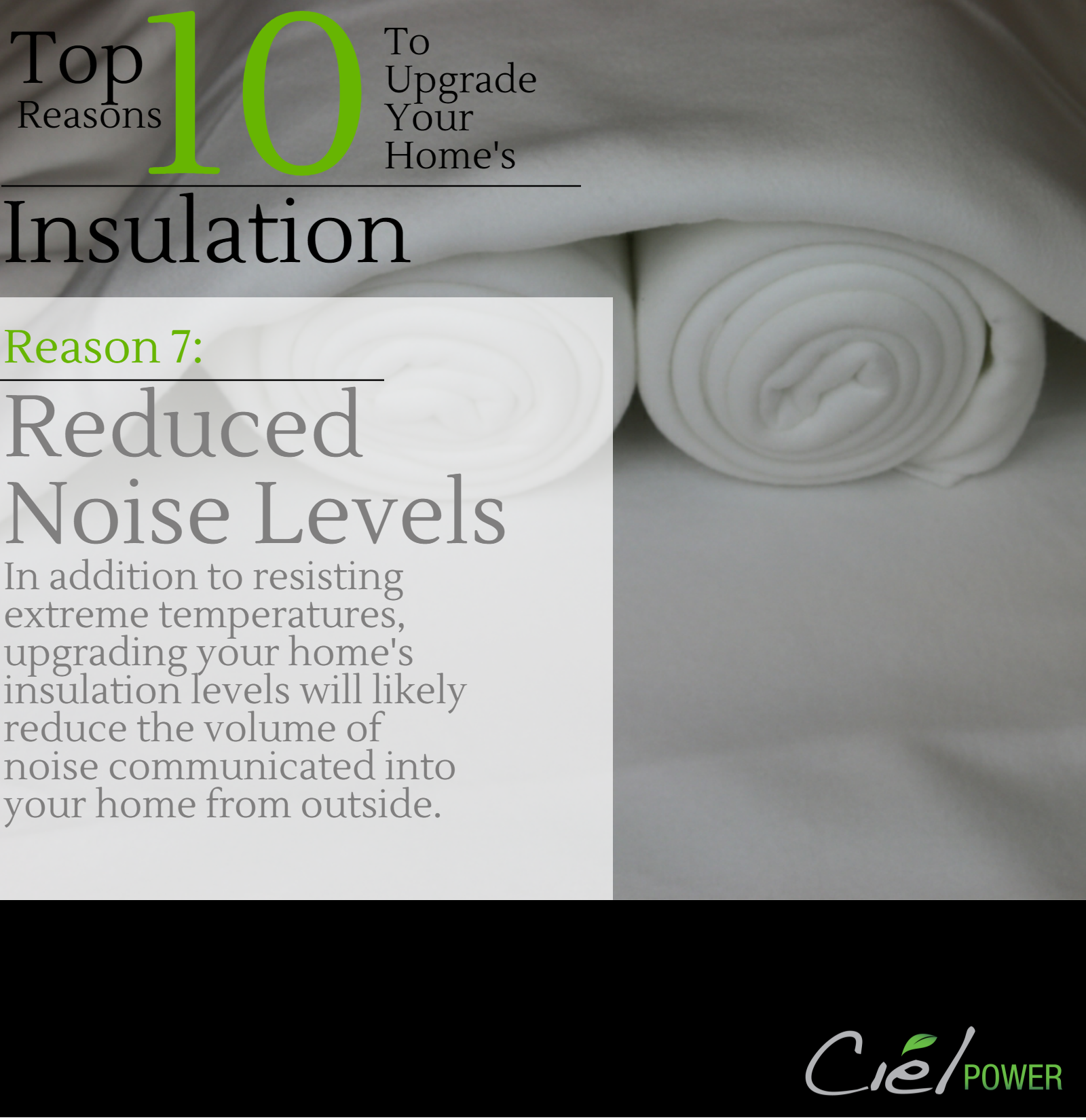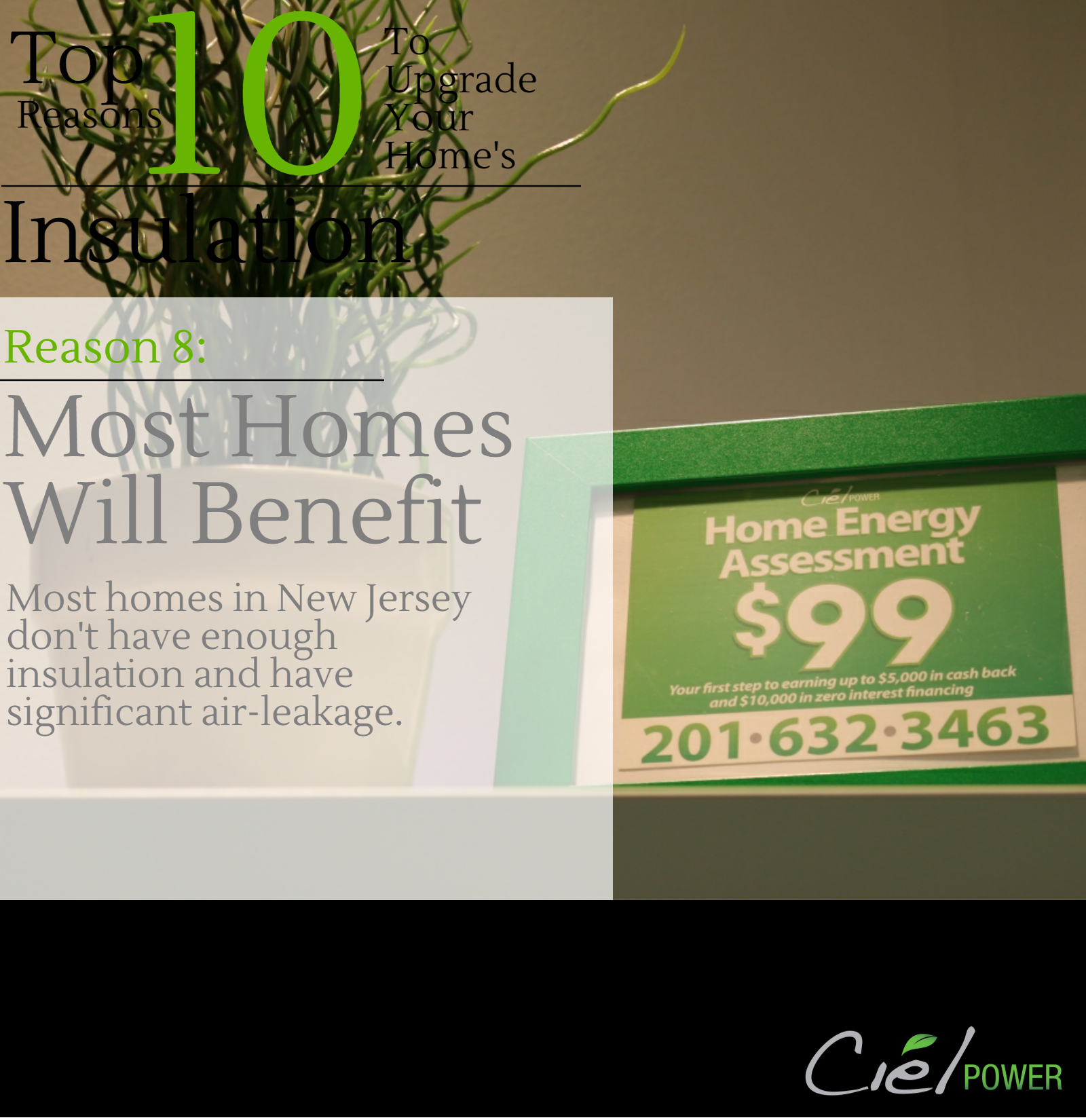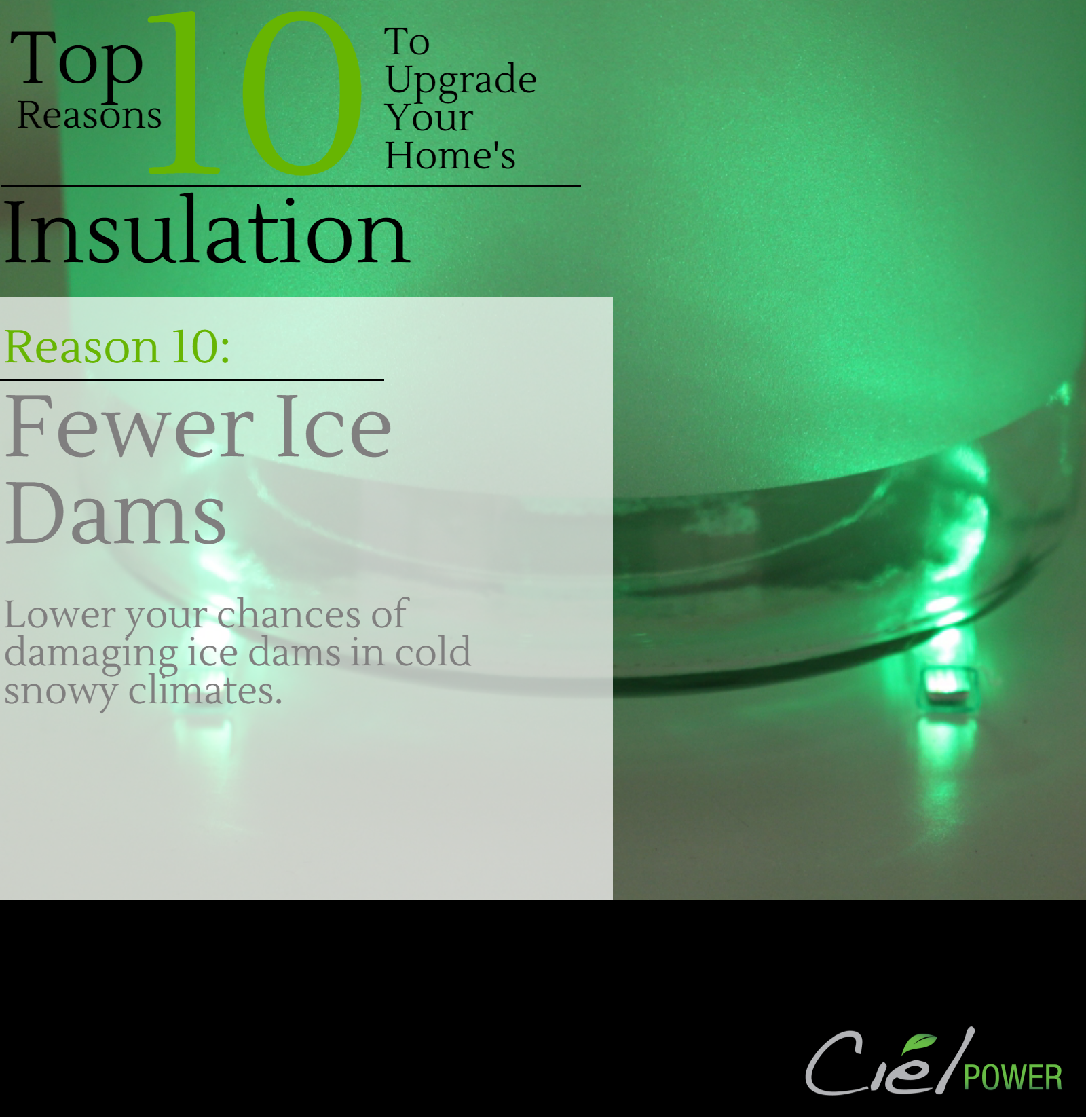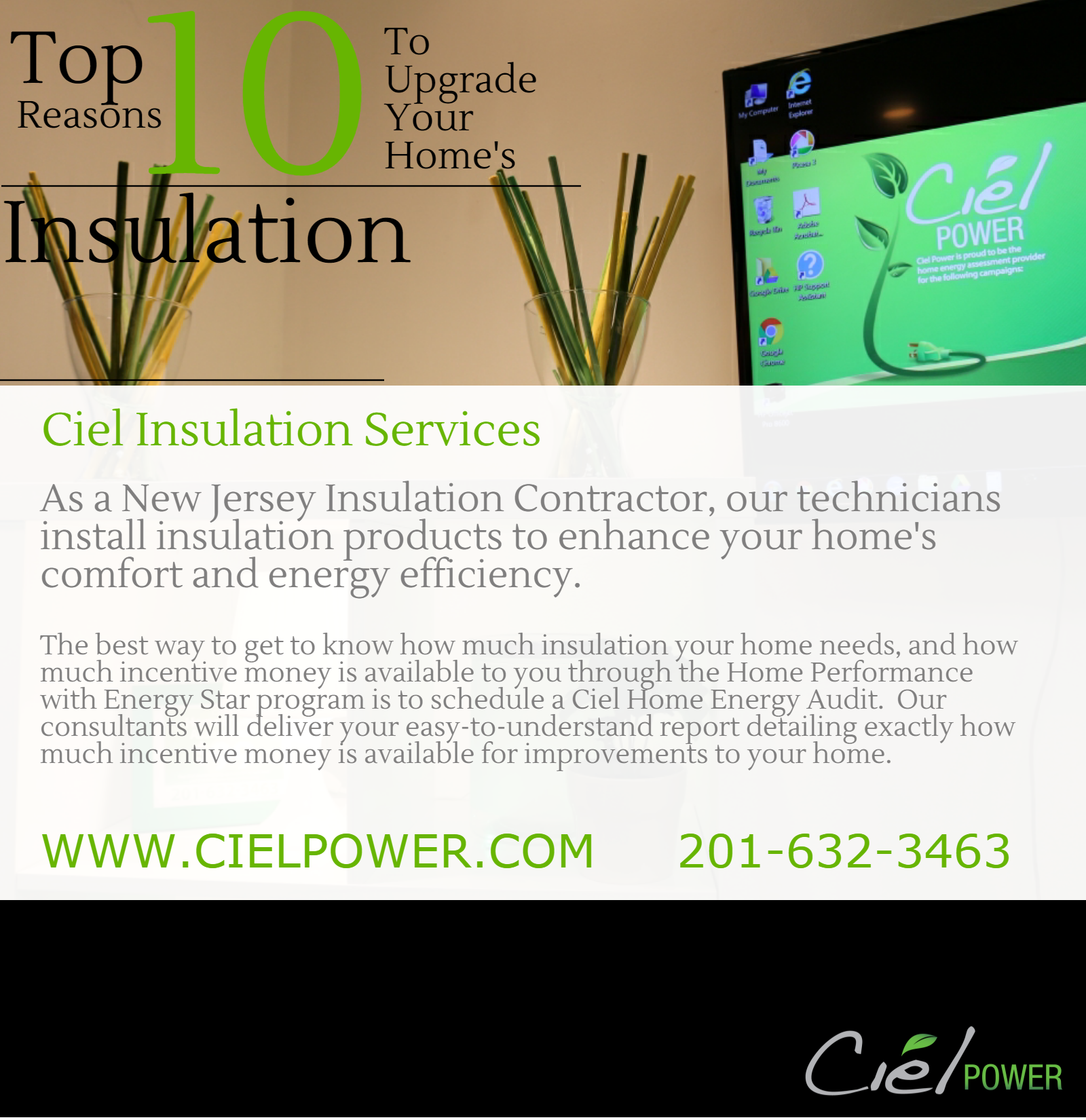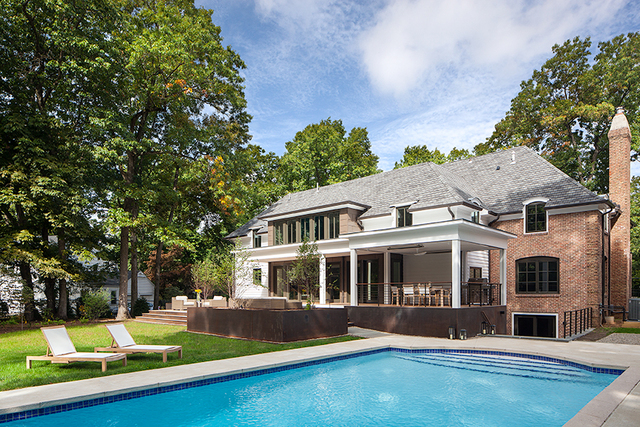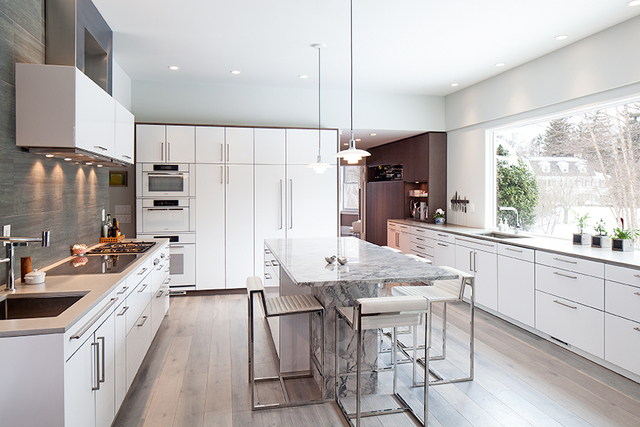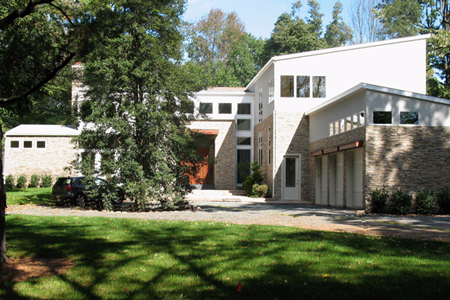Inside Ciel's First Clean Energy Conference
New Jersey’s Energy Master Plan;
Incubating A Clean Energy Economy
The first draft of New Jersey’s Energy Master Plan sets forth a strategic vision for the production, distribution, consumption, and conservation of the state’s energy — but what does it mean for the companies participating in the state’s clean energy economy?
Kearny based Ciel Power LLC and Kearny Point partnered with the New Jersey Sustainable Business Council and Hugo Neu Corporation to jump-start the conversation Tuesday with “New Jersey’s Energy Master Plan; An Interactive Discussion on Incubating the Clean Energy Economy in New Jersey,” a jam-packed morning of panels and break-out sessions held at Kearny Point featuring some of the industry’s most influential stakeholders.
“We wanted to do something that is different, and which speaks to the increasing pace of clean energy competition and innovation across the country, particularly in states like New York and Massachusetts.” said Scott Fischer, Managing Member of Ciel Power LLC. “The level of attendance at this event speaks to the desire for a cleaner and greener economy here in New Jersey; one that is more vibrant and inclusive than the one we know today.”
One of the conference highlights was hearing directly from the author of New Jersey’s the Energy Master Plan, Hannah Thonet, Bureau Chief for Policy, Office of Clean Energy at the New Jersey’s Board of Public Utilities. Thonet explained how, “the 2019 EMP outlines in broad strokes how climate, energy, and economy are all interrelated and mutually supportive.”
The group brought together representatives from across a variety of clean energy sectors including William O’Hearn, Communications and Outreach Manager, Business Network for Offshore Wind, Lyle Rawlings, President & CEO of Advanced Solar Products, Jason Steinberg, Founder & COO, Scanifly, and Pam Frank, CEO, ChargeEVC.
Ciel Joins 11 Major New Jersey Companies In Support Of Electric Vehicle Legislation
Ciel Power LLC is proud to join Ceres and the New Jersey Sustainable Business Council, along with eleven major New Jersey companies including DSM, Unilever, IKEA, Earth Friendly Products, Hackensack Meridian Health, JLL, and several others in support of electric vehicle legislation under consideration by the New Jersey Legislature (S2252/A4819).
Ciel Power LLC is proud to join Ceres and the New Jersey Sustainable Business Council, along with eleven major New Jersey companies including DSM, Unilever, IKEA, Earth Friendly Products, Hackensack Meridian Health, JLL, and several others in support of electric vehicle legislation under consideration by the New Jersey Legislature (S2252/A4819).
Why major N.J. companies are pushing for bills to support more electric vehicles - ROI-NJ
Twelve major investors and companies with significant operations or investments in New Jersey - including Hackensack Meridian Health, Unilever and JLL - are calling on lawmakers to pass bills they are calling bold electric vehicle legislation. In a letter to the Legislature on Wednesday, the group said bills S2252/A4819 are "well-designed policies to accelerate our ..
“As businesses and investors with significant operations or investments in New Jersey, we encourage you to support well-designed policies to accelerate our transition to a clean, modern transportation system. Specifically, we support passage of bold electric vehicle (EV) legislation currently under consideration by the legislature(S2252/ A4819).
Key elements of the bill include an EV rebate program, major investments through a public/private development ecosystem in accessible, affordable, and convenient public-charging infrastructure, and bold statewide goals for EV adoption, including a goal of 90 percent EV sales by 2040. By passing this legislation, New Jersey would send a clear economic signal that the Garden State is a leader in the transition to a clean transportation system and economy.”
Style and Sustainability; Photos From the Summer '18 Sustainable Fashion Show
We partnered with The Regeneration magazine, Reeves Reed Arboretum, Green Summit, and Sustainable Fashion Stylist Lauren Engelke to explore the many different facets of ecofashion and to bring the latest sustainable fashion designs to the Reeves-Reed runway in Summit, New Jersey.
The apparel industry's impact on water systems, greenhouse gas emissions, and waste streams make it the second largest polluting industry next to oil. A growing number of designers, labels, and academic institutions are working to lessen the negative environmental and social impacts of this industry.
This year, we partnered with The Regeneration magazine, Reeves Reed Arboretum, Green Summit, and Sustainable Fashion Stylist Lauren Engelke to explore the many different facets of ecofashion and to bring the latest sustainable fashion designs to the Reeves-Reed runway in Summit, New Jersey.
See all of the photos in the slideshow here and check back for more updates!
A Changing Climate and Its Impact on New Jersey's Water Supply
It was a remarkable affair at the inaugural LOCAL ACTION/GLOBAL IMPACT event. Panelists gathered under the shade provided by a full canopy of trees above, a striking display of early spring flowers in full bloom.
It was a noteworthy affair at the LOCAL ACTION/GLOBAL IMPACT Panel Discussion, held at the Reeves-Reed Arboretum in Summit, New Jersey. Panelists gathered under the shade provided by a full canopy of trees above, a striking display of early spring flowers in full bloom.
The audience took their seats as the arboretum's Executive Director, Frank Juliano, introduced the panelists to a diverse crowd of attendees who gathered to listen, learn, and participate in the discussion on this warm, humid evening.
"Reeves Reed Arboretum, along with our partners, Ciel Power and Green Summit, champion best practices in sustainability to empower individuals to actionable results."
Juliano launched the discussion with the question; "What is climate change, and is it different from global warming?"
Governor Whitman former head of the U.S. Environmental Protection Agency and founder of The Whitman Strategy Group, a provider of environmental and energy consulting services fielded the first question to begin the discussion;
"Climate change is what is going on, and it's caused by global warming." Whitman continued, "Warming is what is causing the climate to change."
Pointing to the arctic, which she says is, "warming at twice the rate of the rest of the world." The former head of the U.S. EPA described four arctic villages that have agreed to relocate inland after being confronted with the effects of a changing climate.
“We see what the real impact on people’s lives and on their livelihoods. The question is Who pays for it? Where do they go? What do you move? Do you move the hospital first? or the grocery store first? and then the houses? How do we do this? It is enormously expensive and enormously important.”
As the discussion continued, the panelists spoke to a range of topics including the population in New Jersey most vulnerable to the impacts of a changing climate, the role that technology and education play in adapting to these challenges, and ways that citizens who may be concerned about these issues can begin to affect change.
At the conclusion of the discussion, Juliano summed up the evening in so many words. "Reeves-Reed Arboretum, Ciel Power, Green Summit, we all look to you, our experts, our neighbors, our family, our friends, for innovation, for common-sense solutions to a fair, more kind and sustainable world."
Juliano ended the discussion with a quote from Abraham Lincoln, reminding us what it means to be together in this effort, saying; "We are the last best hope."
LOCAL ACTION/GLOBAL IMPACT Event panelists included: Gov. Christine Todd Whitman, former head of the U.S. Environmental Protection Agency and founder of The Whitman Strategy Group, providing environmental and energy consulting services to organizations and government agencies; J. Douglas Reid-Green, senior technical lead for BASF’s environmental remediation team; Jennifer Coffey, Executive Director of the Association of NJ Environmental Commissions; Melanie McDermott, Senior Researcher at Sustainable Jersey; and, David Naidu, President of the Common Council of Summit, NJ, and a partner at K&L Gates with an emphasis on environment, land and natural resources. Also pictured in the photo are Melissa Spurr and Donna Patel, both volunteers at Green Summit, and Scott Fischer, Managing Member of Ciel Power LLC.
Americans Are Staying Home More. That's Saving Energy. Except At Home.
We're spending more time at home; a lot more. Virtual corporate networks, video streaming services, social media, and online shopping are steadily increasing the amount of time we're spending in our living rooms and home offices.
This nesting is yielding an unexpected benefit; Americans are saving energy. A recent study published in Joule estimates that between 2003 and 2012, our time at home has increased by more than eight days per year, and the associated reduction in travel (one minute of car travel is 20 times more energy intensive than time at home) and other activities is saving an estimated 1.7 trillion BTU's of energy each year.
Watch Netflix tonight?
Work from home this Friday?
Dinner-in from our favorite place on Uber Eats?
Skip the mall and have it delivered by Amazon?
According to the results of a new study published in Joule, technology is radically transforming our modern lifestyles.
Technology delivers what we need when we need it.
Countless video streaming services have us on the couch, immersed in a perpetual diversion of top-flight entertainment; void of commercials, credits, and even opening scenes.
Streamlined apps offer effortless delivery of our favorite eats directly to our doorstep without the inconvenience of being exposed to the elements, parking, and wait for a table.
"Omnipresent connectivity brought the corporate headquarters into our upstairs home of office."
Interactions with others; casual, business, intimate, or otherwise, routinely happen with the aid of technology from the comfort of our homes.
Between 2003 and 2012, the average amount of time Americans spent at home increased by more than eight days per year.
The more time we're spending at home, the less energy we're using outside the home.
All of this nesting has yielded an unexpected benefit; Americans are saving energy. Lots of it.
While home energy use increased during the period by nearly 480 trillion BTU's, the reduction in traveling (one minute of car travel is 20 times more energy intensive than time at home) resulted in total net savings of 1,700 trillion BTU's of energy (a gallon of gasoline contains about 120,000 BTU's, so this lower consumption translates into 14 billion gallons of gasoline).
The amount of energy we're using in our homes is growing.
Using less energy outside of our homes is good news, but it underscores the importance of making home energy use more efficient.
The North American Insulation Manufacturers Association (NAIMA) estimates roughly 90 percent of existing U.S. Homes are under insulated. “wasting energy, money, and decreasing comfort for homeowners.”
The Importance of a home energy audit.
A home energy audit, also known as a home energy assessment is the first step to assess how much energy your home consumes and to evaluate what measures you can take to make your home more comfortable and energy efficient.
The assessment goes into great detail to ascertain your home's energy use, including a room-by-room examination of the residence and a thorough examination of past utility bills.
Give your home the upgrades it needs.
Remember, assessments alone don't save energy. You need to implement the recommended improvements to enhance energy efficiency, lower utility bills, and increase comfort.
Utilize available incentives.
Because the cost of installing energy efficiency upgrades can be significant, homeowners in New Jersey may want to consider participating in New Jersey Jersey Clean Energy's Home Performance with Energy Star program.
This program, administered by the New Jersey Board of Public Utilities, offers homeowners rebates ranging from $2,000 to $4,000 based upon the projected energy savings of the project. Qualified homeowners may also be eligible for an interest-free loan of up to $10,000 to help cover the cost of improvements.
Enjoy.
This means that you can upgrade your home in less time than it takes to binge watch all seven seasons of Game of Thrones on HBO. So get an assessment scheduled, install your upgrades, then kick back, relax, and enjoy the show.
How Rain Gardens Work [And Why You Need One]
Gardening isn't just about planting flowers anymore.
In fact, your garden has taken on an enormous amount of responsibility over the past decade.
We know that fresh organic produce grown in your garden can lower your exposure to chemicals and save you money at the grocery store.
We've also recently learned that incorporating the the right mix of flowers can help prevent the extinction of pollenators.
Now, your garden can also help you lower the likelihood of a flooded basement, fight pollution, and replenish groundwater supplies.
Gardening isn't just about planting flowers anymore.
In fact, your garden has taken on an enormous amount of responsibility over the past decade.
The Summit Free Public Library located at 75 Maple Street in Summit, NJ recently installed two rain gardens with the help of the Rutgers Cooperative Extension Water Resources Program, the Rahway River Watershed Association, and the Summit Environmental Commission. Funding for the two rain gardens was provided by the National Fish and Wildlife Foundation and the Hurricane Sandy Coastal Resiliency Competitive Grants Program.
We know that fresh organic produce grown in your garden can lower your exposure to chemicals and save you money at the grocery store.
We've also recently learned that incorporating the the right mix of flowers can help prevent the extinction of pollenators.
Now, your garden can also help you lower the likelihood of a flooded basement, fight pollution, and replenish groundwater supplies.
What Is a Rain Garden?
Signage helps to educate residents of Summit, New Jersey on the purpose and benefit of two recently installed rain gardens at the Summit Free Public Library. Water from the roof of the library is diverted into the rain gardens instead of the local sewer system. Contaminates are filtered from the water through a process known as 'biofiltration'. The filtered water is slowly released from the rain garden through percolation and transpiration.
Rain gardens are depressions in the ground that are filled with permeable material and capped with deep-rooted indigenous plants such as wildflowers, shrubs, and small trees.
After a rainfall, water is stored in these depressions and slowly released through percolation and transpiration.
A natural filtration process occurs as the stored water is released gradually, capturing contaminates and preventing local flooding and water pollution.
Rain Gardens Are Growing Fast
Adoption of rain gardens has caught on quickly. Municipalities including Summit, Madison, and Bernardsville, New Jersey are incorporating rainwater systems into municipal landscapes.
Corporations are installing rain gardens adjacent to parking lots and sidewalks to capture and filter water runoff and New Jersey's Department of Environmental Protection has installed rain gardens in its Edison, New Jersey location to reduce stormwater runoff and to replenish groundwater supplies.
Standard-setting organizations including the U.S. Green Building Council and National Association for Home Builders are encouraging the adoption of rain gardens by offering points towards industry certifications to projects that incorporate rain gardens.
What Are The Benefits of a Rain Garden?
Planning for the rain gardens located at Summit City Hall and the Summit Free Public Library involved both form and function. The garden needed to be located far enough away to prevent the stored water from seeping into the building (typically at least ten feet away from the building) while avoiding sewage and septic systems located underground. Downspouts were redirected to divert rainwater into the rain garden.
Because rain gardens release water slowly and often include indigenous plants, they typically need less maintenance and less watering than their conventional counterparts.
Rain gardens divert stormwater runoff away from your home into a storage basin. A well-designed drainage system coupled with a properly installed rain garden might just mean that you've pumped out your last flooded basement.
Mosquitoes take to puddles and ponds like celebrities take to 5-star hotels. Since rain garden water is stored below ground, your back yard will attract A-list insects like worms, honey bees and butterflies rather than mosquitoes, gnats, and flies.
Like a Brita Filter for your yard, water trapped in your rain garden is slowly filtered and released, resulting in cleaner ground water, streams, lakes and oceans.
Where Did Rain Gardens Originate?
Consideration was given to the amount of available sun and native plants were selected because they are best suited for the climate. Hardy plants that tolerate both wet and dry environments were selected because the rain garden will temporarily fill with rainwater from time to time.
Where Can I Get More Information About Rain Gardens?
Considering all of the benefits that rain gardens bring, and that rain gardens are virtually maintenance free, it's no wonder why they seem to be sprouting up everywhere!
The options with rain gardens are almost limitless.
You can do anything from a simple wildflower or pollinator garden to lush exotic plantings, all while incorporating a rain garden into the larger design.
The Rutgers Cooperative Extension Water Resources Program offers some of the best resources we've seen in the rain garden world.
Instead of planting an ordinary garden, with a little extra effort you can incorporate a rain garden into your next flower bed.
Were Can I See Examples of Rain Gardens?
City of Summit Mayor Nora Radest joins representatives from the Summit Environmental Commission, the Rutgers Cooperative Extension Water Resources Program, and the Rahway River Watershed Association to celebrate the one-year anniversary of the installation of rain gardens at Summit City Hall and the Summit Free Public Library
We recently accompanied Summit Mayor Nora Radest, members of the Rutgers Cooperative Water Resources Program, the Summit Department of Public Works, and the Summit Environmental Commission on a tour of two recently installed rain gardens located at Summit City Hall and the Summit Free Public Library.
Insulation: An Ideal Improvement for Home Sellers
Before selling a home, owners usually want to create a comfortable atmosphere in the house that exudes happiness and efficiency. This may require a few home improvements to confirm that the home meets buyer expectations. The good news is that adding insulation in the attic and home exterior is often an excellent choice with a good return on investment.
Written by Gary Ashton, Gary Ashton REALTOR®
The Ashton Real Estate Group of RE/MAX Advantage
Before selling a home, owners usually want to create a comfortable atmosphere in the house that exudes happiness and efficiency. This may require a few home improvements to confirm that the home meets buyer expectations. The good news is that adding insulation in the attic and home exterior is often an excellent choice with a good return on investment.
How Is Insulation Important?
“Paying more for energy is a great idea!”, said no one ever. Most homeowners rely on a furnace to heat their homes in winter, and an air conditioner or heat pump to cool it down in the summer. There are several systems within the home that can make this process easier or more difficult to achieve. Insulation acts as a vital barrier between the outdoor temperature and inside. The better the insulation, the more that the home can keep heated air inside when it is cold, and outside if it’s hot. Homes that do not have adequate insulation may need to run the furnace or air conditioner more frequently, which costs
more money and can decrease the lifespan of the equipment.
Why Do Buyers Expect Quality Insulation?
There are two reasons that buyers want a home with great insulation. First, homes that need more insulation may have parts of the home that are particularly drafty or cold in the winter. This is especially true for houses that also have problems with air leaks. Second, buyers prefer homes that can feature a greater degree of efficiency and energy savings — and while improvements like solar panels may be too costly for some, insulation can appeal to any buyer. When there is not enough insulation, the furnace or air conditioner could run all day without making the home ideally comfortable. Owners could even
consider replacing the furnace or air conditioner, when doing so would cost thousands of dollars more and might not completely solve the problem. With the right amount of insulation, the home may actually feel better without using quite as much energy for heating and cooling.
Does Insulation Need to Be Replaced?
Every home is a little bit different, so what works for one homeowner might not be exactly the same for another. However, the truth is that many homes can support the addition of insulation without having to remove what is already there. If the existing insulation is in good condition overall, it may save money and time to consider simply having a professional increase the insulation to meet the current guidelines for the climate region. Some types of insulation, such as spray foam insulation, are designed to minimize or solve for faults in the home exterior, as well. An expert can help determine which insulation is best for any given home.
Is Insulation a Valuable Home Improvement?
Most people gearing up to sell a home do not have unlimited home improvement budgets, and this is where insulation really gets an opportunity to shine. Gutting the kitchen and rebuilding it may certainly look flashy, but it costs a great deal of money to accomplish. By comparison, adding insulation may cost less and greatly improve the comfort and efficiency of the entire home. As a result, increasing the insulation is often regarded as a home improvement that may actually raise the home’s resale value by more
than its cost. This helps to save money for other upgrades that buyers also want to see.
When thinking about the best home improvements to make before selling, the choices with the best value may not be visible to potential buyers. With better insulation, the home will be more efficient and feel more temperate to buyers when they come to see the home. An investment that yields an excellent result and a nice increase in the possible sale price.
Nashville REALTOR ®, Gary Ashton started in his career in real estate sales in 2001, and quickly became part of the top 1% of REALTORS ® in the country. His team has also become the #1 real estate team with RE/MAX Advantage, which consists of more than 80 Nashville REALTORS ®.
Since 2001, Gary has focused his attention on gaining a strong internet presence, and on refining his sales and marketing process to generate enough leads to keep more than 80 full-time buyer's agents happy.
How Yesterday's News Will Change Your Home's Comfort
How unsold copies of the New York Times and other newspapers are transformed into the solution to a more comfortable and energy efficient home.
How unsold copies of the New York Times and other newspapers are transformed into the solution to a more comfortable and energy efficient home.
Goodbye, sweltering summers and frigid winters. Hello, even room temperatures and lower energy bills.
An insulation product called cellulose insulation uses recycled newspaper that can be installed in the attic and walls of your existing home. It works a bit like fiberglass insulation in that it adds thermal resistance. Let's say your home was built before the 1990's when insulation and energy efficiency began moving to the forefront of the construction industry. During seasonal heating and cooling months, poorly performing or nonexistent insulation in your walls and attic contributes to comfort issues in different areas of your home. Using specialized equipment, cellulose insulation can be added to these areas to improve their overall resistance to extreme temperatures, resulting in a more comfortable and energy efficient home during winter and summer months.
In homes with cellulose insulation, homeowners notice improved comfort, reduced levels of noise, and lower heating and cooling bills. The cellulose insulation can reduce outdoor air-infiltration when installed using the dense packing technique, a method commonly used when insulating walls and underneath attic decking. It means the material is blown into an enclosed cavity using specialized equipment at a very high velocity. The fibrous material congeals together to form a solid mass inside the enclosed cavity, eliminating the movement of air and creating a barrier between the extreme temperatures, noise, insects and seasonal allergens located outside the home, and the indoor living spaces located within the home.
Fiberglass insulation is a competitor to cellulose, but it doesn't have the resistance to noise, insects, air-infiltration, or rodents offered by cellulose insulation. Premium versions of cellulose insulation use a 100% borate formulation as a fire retardant. Borate, a naturally occurring mineral formed from rocks and minerals containing Boron, is added to cellulose insulation to impart flame resistance. The mineral protects the fibers by melting around them to form a protective glassy coating when exposed to a heat source. Borates are commonly used in cosmetics, medically as an eye wash solution, as a water softener, and in many other products as a neutralizing or buffering agent. Borates are less toxic than table salt and are a compelling alternative to the caustic chemicals often found in other insulation products.
It's worth noting how upgrading a home's insulation levels compares to replacing windows. According to the U.S. Department of Energy, floors, walls and ceilings contribute 31% of the total air-leakage in a home, whereas windows only account for 10%. That means a combination of upgraded air-sealing and insulation may be more than three times more effective when compared to replacing all of a home's windows. Additionally, a single-pane window has an R-value (the capacity of an insulating material to resist heat flow, the higher the R-value, the greater the insulating power) equivalent of roughly R-1. A typical single-pane window paired with an exterior storm window is about twice as effective at an R-2. A premium triple pane replacement window has an R-value equivalent of R-5.
Compare that to adding cellulose insulation to an existing wall without insulation and the comparison becomes really compelling, even to the point where you might consider keeping your windows and adding insulation to the rest of your home. A wall without insulation is roughly an R-4 depending upon its construction, compared to the R-value of an insulated wall, generally greater than R-13. That means great R-value over a larger percentage of the exterior of your home (exterior walls commonly account for between 75-80% of a home's exterior surface), often at a lesser cost than premium replacement windows.
Project Spotlight: The Episcopal Church at Princeton University | Procter House
The Episcopal Church at Princeton University's Procter House has been the home of both the Chaplain and the Chaplaincy since its purchase in 1928. Located on the corner of Dickinson Street and University Place in Princeton, the Procter House is directly across from Princeton University's Foulke Hall.
In addition to its private residences, Procter House serves students from Princeton University, Princeton Theological Seminary, and Westminster Choir College at a variety of services and events.
Procter House is located immediately across the street from Princeton University's Foulke Hall.
The Episcopal Church at Princeton University's Procter House has been the home of both the Chaplain and the Chaplaincy since its purchase in 1928. Located on the corner of Dickinson Street and University Place in Princeton, the Procter House is directly across from Princeton University's Foulke Hall.
In addition to its private residences, Procter House serves students from Princeton University, Princeton Theological Seminary, and Westminster Choir College at a variety of services and events.
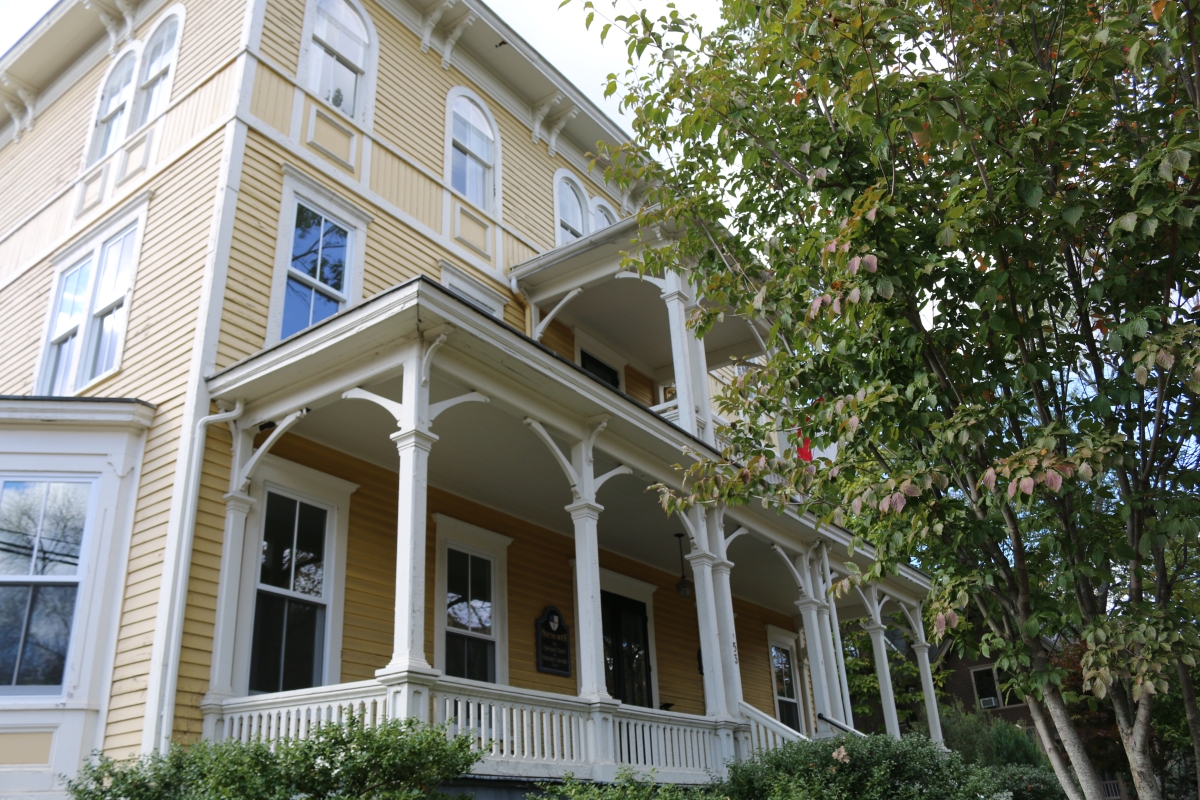
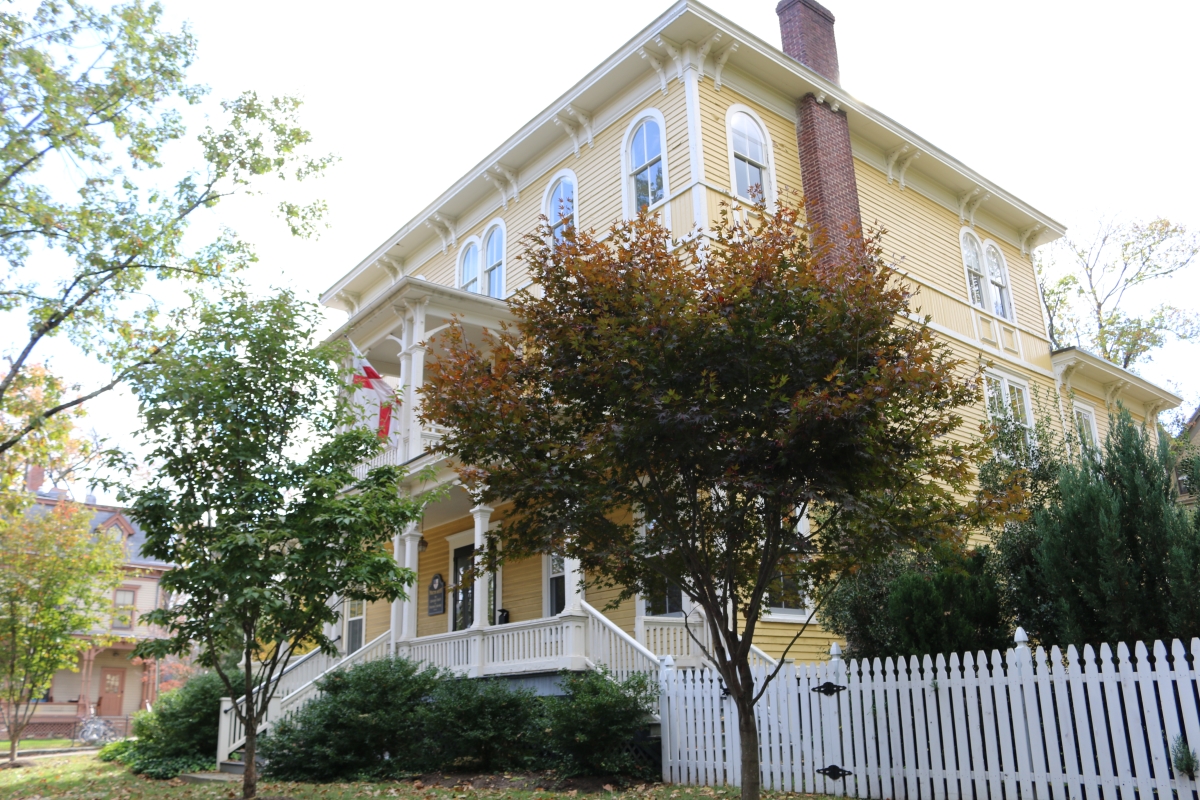
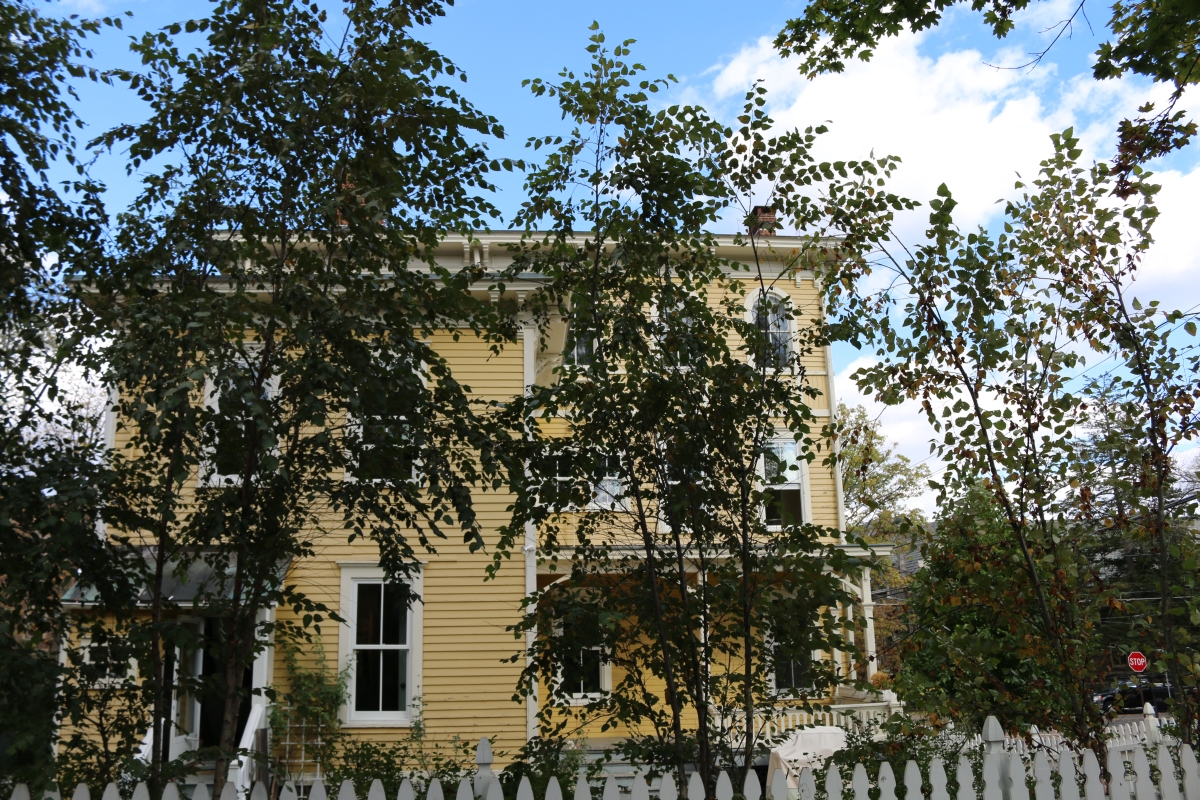
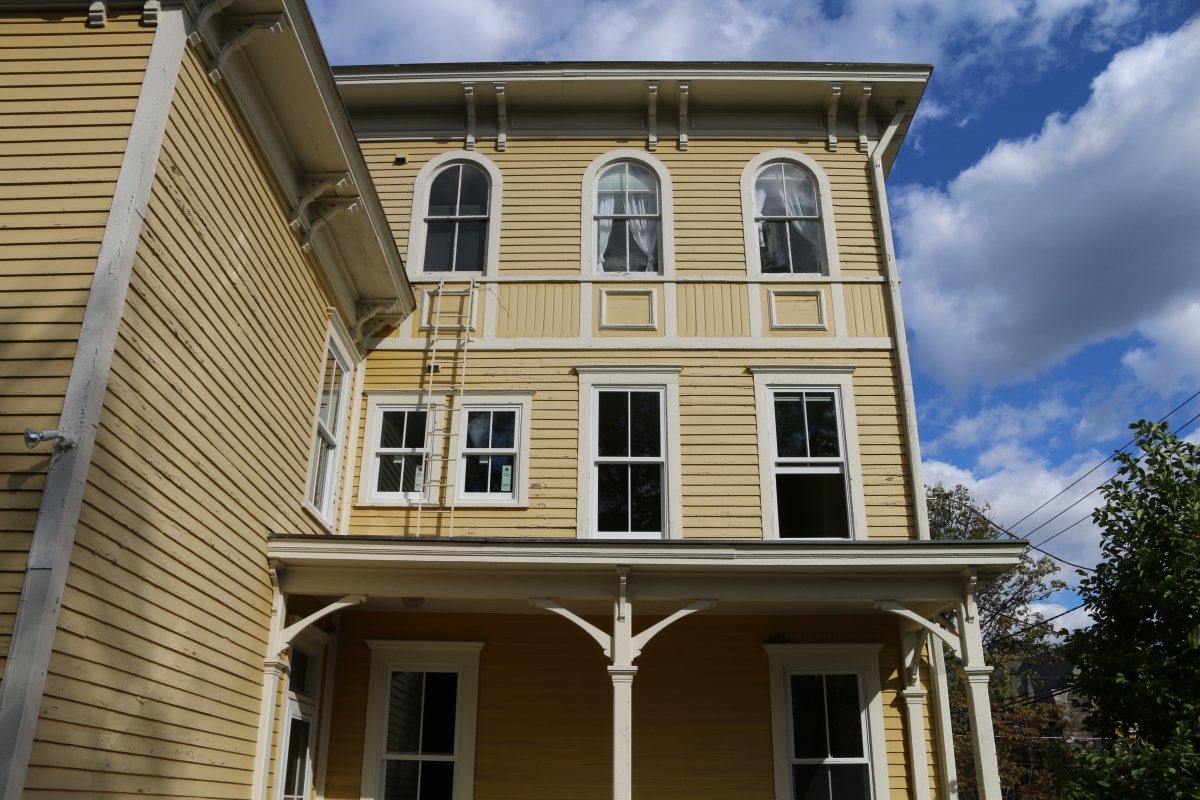
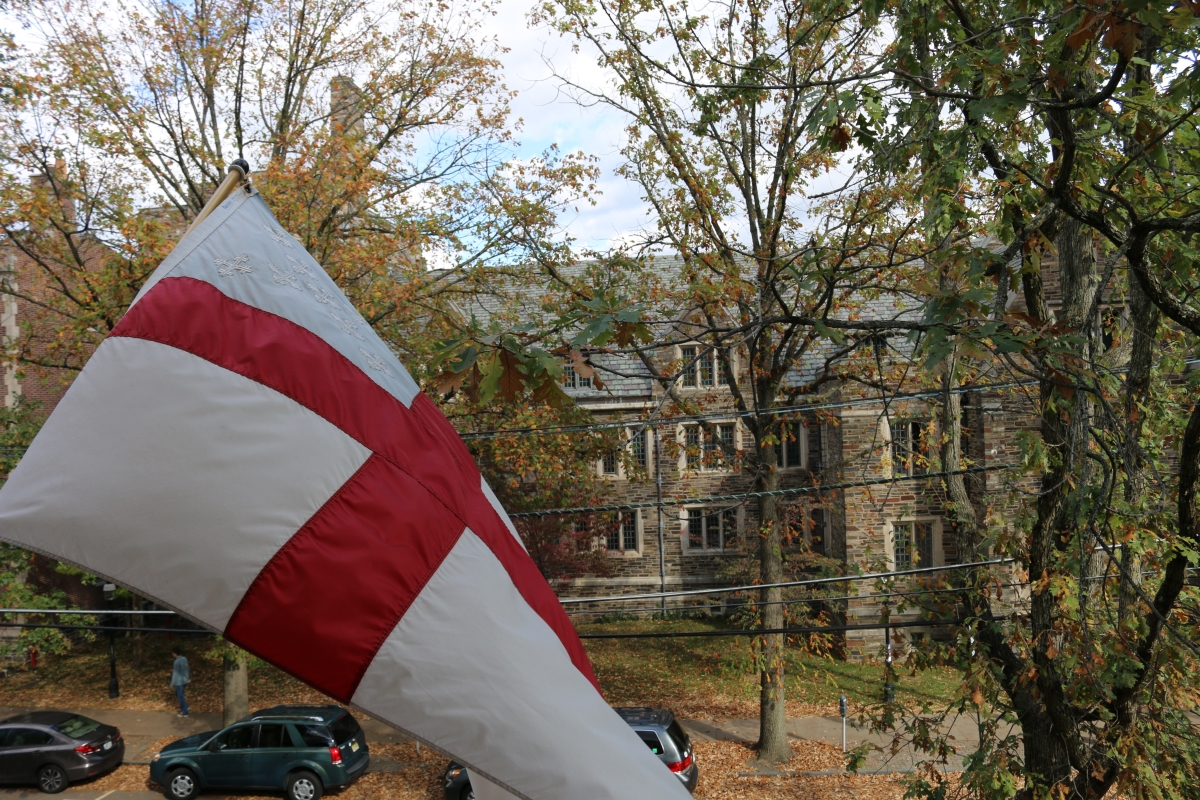
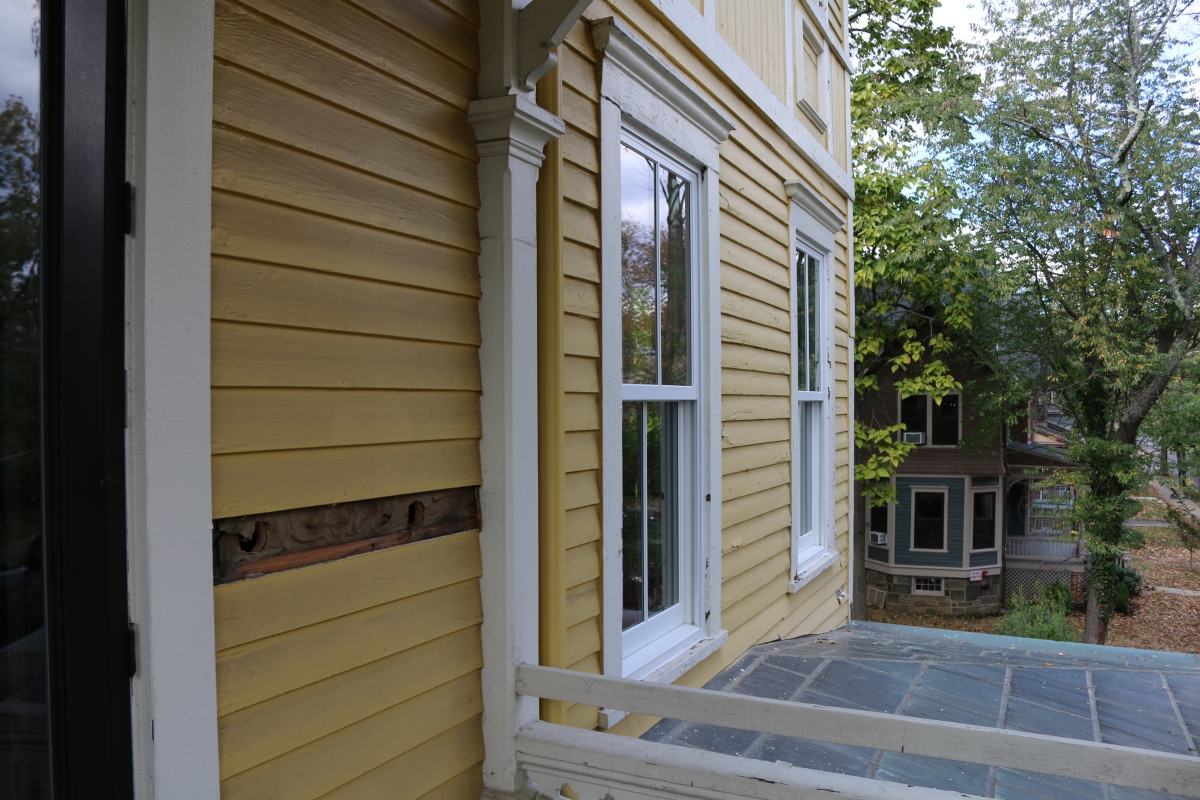

The Episcopal Church of Princeton takes its role of environmental stewardship seriously. Herbs and vegetables are grown on the property using organic non-chemical growing methods and used in the preparation of meals. Vegetable matter generated on the property is composted and used in garden beds located on premise. All paper products, including service booklets are recycled, as are plastics and other recyclables and use of 'throw-away' products is minimized.
With such a strong commitment to the natural environment, it didn't take the staff of the Episcopal Church of Princeton long to act following the results of a recent energy audit of the Procter House. With most of the building dating back more than 150 years, virtually no insulation was found in the walls or the attic and the overall air leakage rate of the building was significantly above recommended levels.
Technicians painstakingly air-sealed and insulated exterior walls, attic entryways, attic flat, and the rim-joist of The Procter House to improve the overall comfort and energy efficiency of the dwelling. The projected energy savings of these measures is expected to yield more than a twenty five percent annual reduction in energy consumption and will significantly reduce the environmental footprint of the structure.
5 Important Reasons To Get A Home Energy Audit
A home energy audit assesses how your home loses or wastes energy and what measures you can take to improve the comfort and energy efficiency of your home. A home energy audit will show you problems that may, when corrected, will have a dramatic effect on your home’s overall comfort and will save you significant amounts of money over time.
A home energy assessment, also known as a home energy audit, assesses how your home loses or wastes energy and what measures you can take to improve the comfort and energy efficiency of your home.
A home energy audit will show you problems that may, when corrected, will have a dramatic effect on your home’s overall comfort and will save you significant amounts of money over time.
The audit uses specialized equipment and expertly trained individuals to uncover ways to make your home comfortable, energy-efficient, and healthy.
Professional energy auditors carry professional credentials from the Building Performance Institute to indicate they have met the required professional and educational prerequisites and are certified to the highest standard in the industry.
The assessment goes into great detail to assess your home's energy use.
The energy auditor will do a room-by-room examination of the residence, as well as a thorough examination of past utility bills.
An assessment will include a blower door test and a thermographic scan of the walls in your home to assess the amount of insulation in your home’s walls.
Your home is as unique as you are. It will take time for your certified home energy professional to evaluate your home and your family’s specific comfort, efficiency, or indoor air quality needs. A comprehensive home energy audit takes approximately three hours to complete.
At the conclusion of your home energy audit, a certified specialist should present you with a list of upgrades. These recommendations follow the guidance of the Building Performance Institute to prioritize repairs that will yield maximum results.
Remember… it’s not rocket science, it’s building science.
Safety
An important part of the home energy audit is the safety testing performed on your heating equipment.
Combustion Safety Testing focuses on three main safety concerns:
Natural gas or propane leakage
Exposed gas pipes and fittings are tested for leakage to ensure they are properly sealed.
Exhaust leakage
The exhaust pressure of your mechanical equipment is tested and exhaust is examined for excessive levels of carbon monoxide.
Carbon monoxide levels
Ambient CO levels are measured to ensure a safe environment for occupants.
Air Leakage & Infiltration
One of the most important pieces of equipment an energy auditor operates is called a blower door, which is used to determine where air is leaking out of your home. If you follow the auditor around while the blower door is running, you might be surprised at what you’d find. Air leaking through face plates on switches and outlets, and escaping around doors, windows, pipes, and under sinks … and all of these places add up. Put them all together and you could have a space the size of a bathroom window -- maybe even bigger -- that’s constantly open. The blower door test is a good way to learn why your house isn’t comfortable. This is usually the biggest source of energy loss in a home, and sealing those gaps is one of the quickest ways to make your home more comfortable and efficient.
Prioritized Repairs
With the power of a home energy audit, you can get the answers you need to make smart, budget-friendly upgrades to your home. Speed your decision making process with our easy-to-understand savings projections, comprehensive project pricing, and our detailed incentive breakdowns. Solve comfort issues with the help of our experienced Ciel Home Performance Consultants who provide the most personalized customer experience in the industry. Making home improvements is tough - we want to help simplify the process.
Cash & Financing Incentives
There are many reasons to embrace energy-efficient home improvements and renewable energy systems. However, some people are hesitant to move forward with these changes due to concerns about upfront costs. If you’re in this group of homeowners, we’ve got good news for you: Many Incentives are available in the form of tax credits, rebates, and savings programs and a home energy audit is often a prerequisite for participating in these programs!
Additionally, you may be eligible for energy-efficient financing if you’re buying, selling, refinancing, or remodeling an energy-efficient home.
Finding Rebates and Incentives
If you’re wondering what specific incentives may be available to you, the following resources can help:
The ENERGY STAR website provides extensive information on federal income tax credits and other energy efficiency incentives. Other ENERGY STAR resources include a handy Rebate Finder, which lets you enter your zip code into a database to find rebates and special offers near you; and its “Tax Credits” FAQ, which provides further guidance toward understanding what credits are available and how to apply.
Database of State Incentives for Renewables & Efficiency
The NC Clean Energy Technology Center offers a comprehensive Database of State Incentives for Renewables & Efficiency. As with the ENERGY STAR Rebate Finder, you can enter your zip code to find geographically relevant policies and incentives. You can also search manually by state. Depending on where you live, you may find upwards of hundreds of opportunities to save big while improving your home’s energy efficiency.
New Jersey Clean Energy Program
If your home is located in New Jersey, the New Jersey Home Performance with ENERGY STAR program offers cash-back incentives in the amount of $2,000, $3,000, or $4,000 to help you save money and extend your home improvement dollars. Incentive financing totaling $5,000, $10,000, or $15,000 gives you comfortable payment options to meet your needs and your budget. Visit our New Jersey Home Performance with ENERGY STAR page to learn more about this valuable program.
Environmental Impact
Energy is so much a part of life that we often use it without thinking about its sources and impacts on the environment.
Most of the energy used by our homes is generated from burning fossil fuels like coal, gas, or oil. Today, fossil fuels provide around 66 percent of the world’s electrical power and 95 percent of the world’s total energy demands.
Accumulation of carbon dioxide in the atmosphere, released from the burning of fossil fuel, contributes to global warming and triggers changes in the surrounding environment and, ultimately, on our social and economic realities.
Increasing efficiency of energy consumption is likely one of the most straightforward and practical ways to climate change mitigation.
New Jersey Insulation Incentives
Get up To $4,000 in cash-back rebates and up to $15,000 in incentive financing to install today's energy-efficient products in your home.
Apply up to $19,000 worth of financial incentives towards improving the comfort of your home while lowering seasonal heating and cooling costs. Cash-back incentives in the amount of $2,000, $3,000, or $4,000 help you save money and extend your home improvement dollars. Incentive financing totaling $5,000, $10,000, or $15,000 give you comfortable payment options to meet your needs and your budget.
Under the 2016/2017 New Jersey Home Performance with Energy Star program, installing energy-saving home improvements could result in cash-back rebates of up to $4,000. Qualified homeowners may also be eligible for an interest-free loan of up to $10,000 or a low-interest loan of up to $15,000 to help cover the cost of installing improvements.
The New Jersey Home Performance with Energy Star program offers up to $19,000 worth of financial incentives to improve the comfort and energy efficiency of older homes.
GETTING STARTED
The first step towards participating in New Jersey Clean Energy's Home Performance with Energy Star incentive program is to schedule a home energy audit, which costs either $49 or $99, depending on the town you live in. The audit will take at between 2.5 and 3 hours to complete and includes a variety of diagnostic tests performed using high-tech tools such as infrared cameras, carbon monoxide and natural gas detectors, and a blower door device that depressurizes the home to help detect air leaks. Every audit includes safety checks for gas leaks and carbon monoxide dangers.
Specialized software is used to analyze energy use and to recommend improvements. Improvements can include adding insulation to the attic, walls, basement, crawlspace, rim-joist, overhang(s), or replacement of heating and cooling systems. Using an audit’s recommendations, a homeowner can pick the improvements that best match their budget or goals.
In many cases, participants in the NJ Home Performance with Energy Star program can significantly improve the comfort and energy efficiency of their home while simultaneously lowering monthly heating and cooling costs.
With the power of a Ciel Home Energy Audit, you can get the answers you need to make smart, budget-friendly upgrades to your home. Speed your decision making process with our easy-to-understand savings projections, comprehensive project pricing, and our detailed incentive breakdowns. Solve comfort issues with the help of our experienced Ciel Home Performance Consultants who provide the most personalized customer experience in the industry.
Applying "whole-house" approach to your home, the New Jersey Home Performance with Energy Star Program delivers incentives for upgrading attic insulation, exterior wall insulation, heating, and cooling systems to ensure that the best of today's energy-efficiency standards are accessible to your family.
As a participating provider of the New Jersey Home Performance with Energy Star program, Ciel provides homeowners with access to the generous rebates and incentives offered through the program. In addition to expediting your participation in the program, Ciel specialists will handle all of the paperwork so you can remain productive.
Take the first step towards participating in the New Jersey Home Performance with Energy Star program with New Jersey's premier provider of home energy audits. Ciel streamlines the customer experience with easy-to-understand reports, experienced consultants, and skilled rebate specialists to speed up your participation without losing track of the details.
Schedule a home energy audit today!
Questions? Our reps have answers. (201) 632-3463.
Seasonal Comfort Strategies
If you have seasonal comfort issues in your home, now is the time to prepare. It may be too late to save all the money you might have saved on summer air conditioning bills, but you still have time to strategize ahead of winter's frigid temperatures.
If you have seasonal comfort issues in your home, now is the time to prepare. It may be too late to save all the money you might have saved on summer air conditioning bills, but you still have time to strategize ahead of winter's frigid temperatures.
A quick search on improving home comfort shows there are hundreds of possible causes of discomfort and any one of these may exist inside your home. Rather than shoot in the dark, Consumer Reports Magazine suggests taking the prioritized recommendations from your home energy audit as a starting point for installing upgrades saying, “you don't have to buy a new house to reap the latest energy savings.”
“Choose a contractor certified by the Building Performance Institute. They're required to do an audit before and after any work to guarantee results.” Consumer Reports magazine says.
Proper insulation levels will help to decrease heat loss and improve comfort during colder winter months. “A properly insulated home not only reduces heating and cooling costs, but also improves comfort,” says the U.S. Department of Energy.
Homeowners participating in New Jersey's Home Performance with Energy Star program have the added assurance of a verification inspection at the completion of work to ensure that renovations have improved the home's performance and that safety standards are met. Verification testing includes comparing both pre and post-air infiltration rates, as well and combustion safety testing performed both before and after the installation of upgrades.
Other benefits of participating in the New Jersey Home Performance with Energy Star program include:
Reporting process that requires participating contractors to report jobs that are promoted to homeowners and performed under the NJHPwES logo.
Job report review process that ensures program compliance and provides for follow up with the contractor when necessary
Customer feedback mechanism which allows customers to provide feedback directly to the program sponsor.
On-site inspection protocols including a sampling rate set at a minimum of 5% for all participating contractors.
Conflict resolution mechanism for responding to and resolving customer complaints.
Record keeping and tracking of results from on-site inspections, customer surveys, and corrective actions. Records must be available for review upon request from the national Home Performance with Energy Star program.
Visit Ciel Power online, or contact your Ciel Home Performance Consultant to start improving the comfort and energy efficiency of your home today!
Managing Member Scott Fischer Shares Energy Efficiency Tips With Country Living Magazine
It's the middle of summer and Country Living magazine just posted their “Ten Small Fixes That Could Save You Big Money In Your Home.” They included several tips from the just released #HOME Summer Edition written by Scott Fischer, Co-Founder and Managing Member of Ciel Power LLC.
It's the middle of summer and Country Living magazine just posted their “Ten Small Fixes That Could Save You Big Money In Your Home.” They included several tips from the just released #HOME Summer Edition written by Scott Fischer, Co-Founder and Managing Member of Ciel Power LLC.
Scott's passion for sustainability carried over into his newly released book #HOME (Summer Edition) 101 Ways To Improve Your Home's Comfort and Energy Efficiency. "It was incredibly hard to narrow down all my favorite tips, since there's so many different things people can do to lower their energy consumption," Scott said. "So, I submitted a list of my favorites from behavioral items, to small DIY projects, to technology apps and let Country Living surprise me with their selections."
Scott was happy with the tips they selected for the Country Living magazine article including his favorite; Have a home energy audit performed on your home and obtain professional opinions before installing energy efficiency upgrades. In the article Scott says, “To get a professional opinion, even if they're not doing a full diagnostic test, is like consulting with a doctor. They add value to the conversation.”
Scott's other recommendations include the use of “smart” power strips to reduce so-called “vampire” loads that cost the average American household upwards of $165 per year according to the National Resources Defense Council.
Country Magazine, a Hearst publication, is the largest selling shelter magazine on the newsstand and the “definitive guide” to the country lifestyle. The entire article, written by Elizabeth Florio, can be found here.
Follow Scott on Twitter, Instagram and facebook to keep up on his latest sustainability tips!
Beth Lovejoy’s Home Energy Audit Experience
Recently Beth Lovejoy, Chair of Summit, New Jersey's Environmental Commission, had a home energy audit performed on her home as part of The City of Summit Home Energy Insight Program.
Beth was kind enough to put pen to paper (or fingers to keyboard) and share her experience with us;
Recently Beth Lovejoy, Chair of Summit, New Jersey's Environmental Commission, had a home energy audit performed on her home as part of The City of Summit Home Energy Insight Program.
Beth was kind enough to put pen to paper (or fingers to keyboard) and share her experience with us;
I had a Home Energy Assessment!
Beth Lovejoy, Former Chair, Summit Environmental Commission
Full disclosure: As the former Chair of the Summit Environmental Commission, I was very interested in Summit having a Home Energy Assessment Program as a service to residents, both because $49 is much less than what individual contractors charge ($250 - $400), and because, in my own house, we have several rooms that feel like you're sitting in the back yard.
So as soon as Summit's program with Ciel was in place, I scheduled an assessment. It was an informative and educational experience.
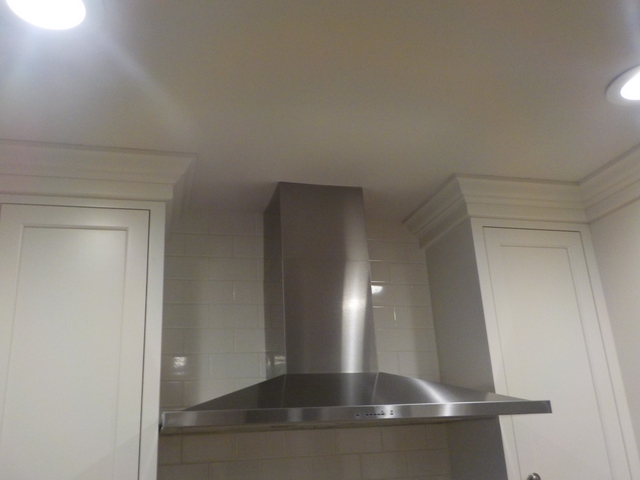
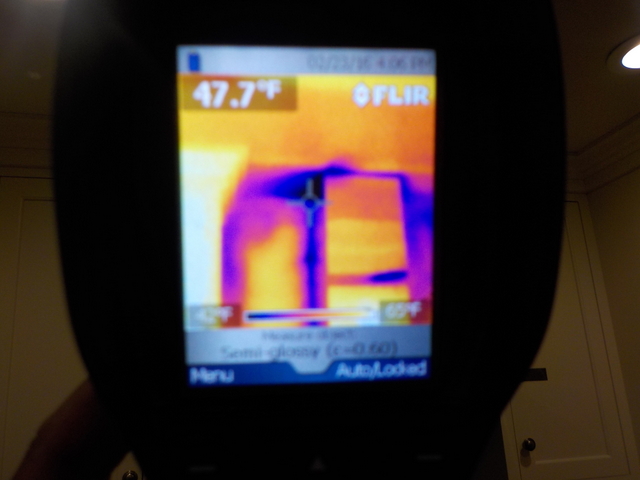
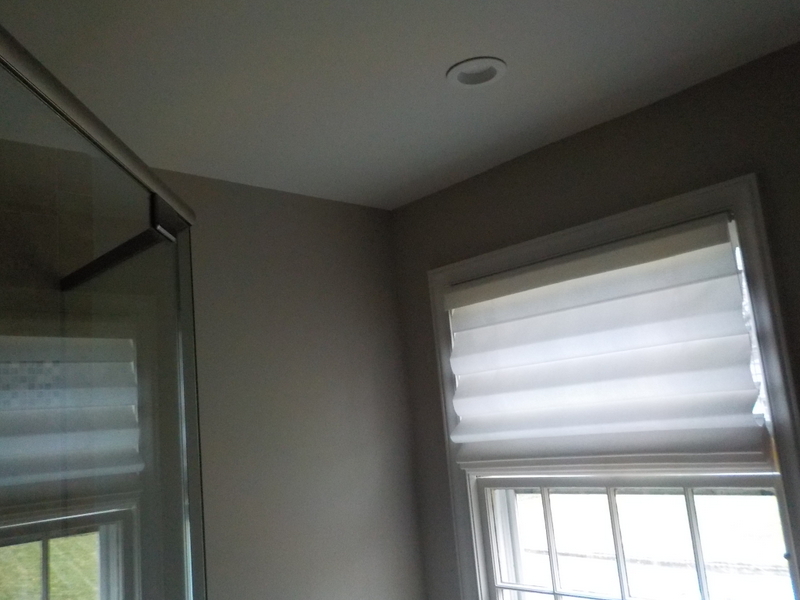
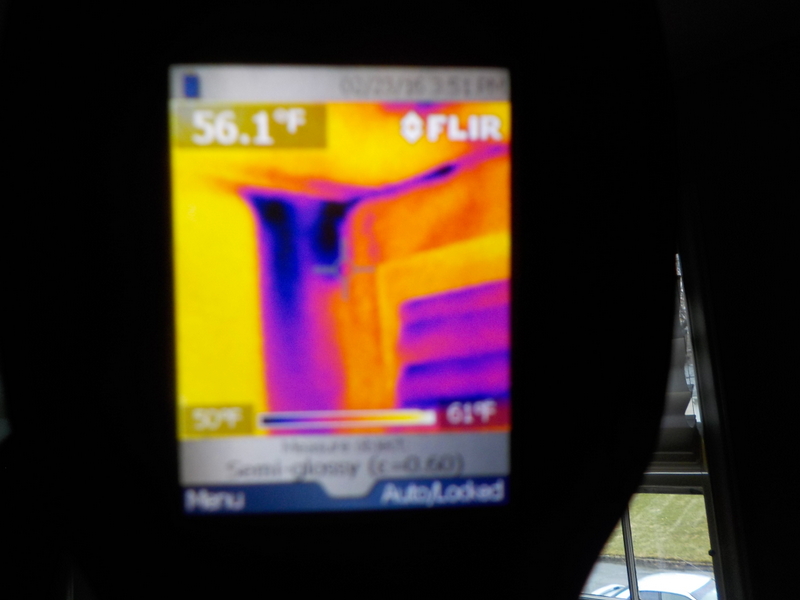
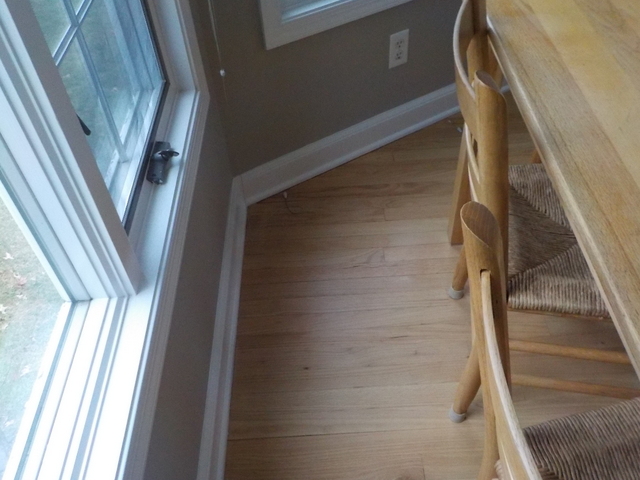
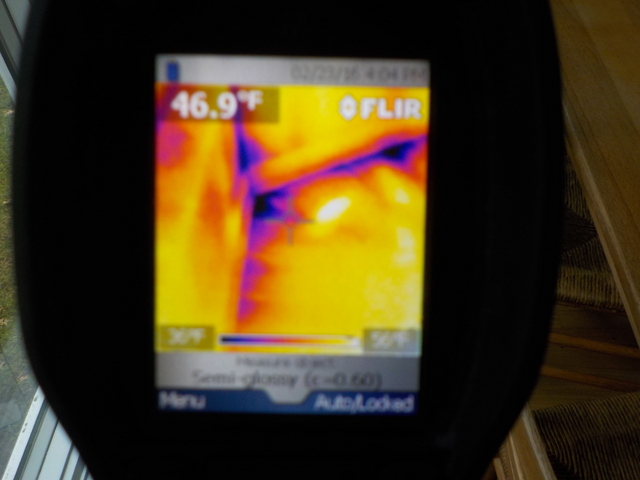
Preparation: All I had to do was provide Ciel with a recent gas bill and an electricity bill. Other than that, I did nothing. I did not clean or move furniture, and I definitely do not have a pristine house. We have boxes from parents and from grown children who have moved out but haven't taken their stuff, and an attic and basement that haven't been cleaned in a while. John, the assessor, said he has seen way worse; I chose to believe him.
John arrived on time, put on the little booties over his shoes, and started by just talking to me about the house generally and what specific concerns I had. He then explained that the assessment would take about two to three hours (depends on house size). Just a note: John will go into every room in the house unless you ask him not to; the attic and basement are the most important but he also checks for leaks around windows, doors, lighting fixtures, and other places, in all rooms.
He then did a safety check for gas and carbon monoxide leaks, then checked the mechanical equipment and level of insulation.
The part I found most interesting was the blower door test. He put a frame in the front door with a big fan in it and when turned on, the fan drew air from inside the house out the front door. When we walked around the inside of the house, we could feel the airflow where there were leaks (a lot in my case). He also has an infrared gadget that he pointed at areas he suspected were leaky or not well insulated, and he could read the temperature there plus we could see the color differential on the gadget.
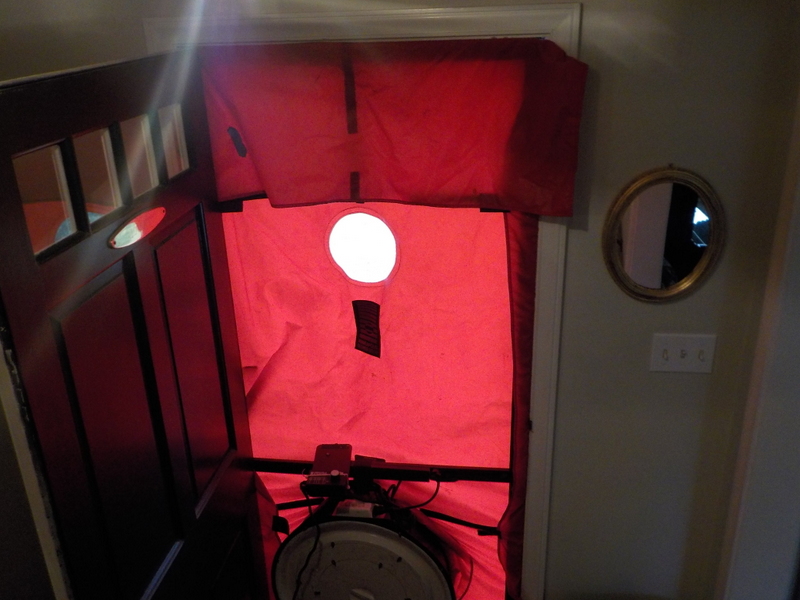
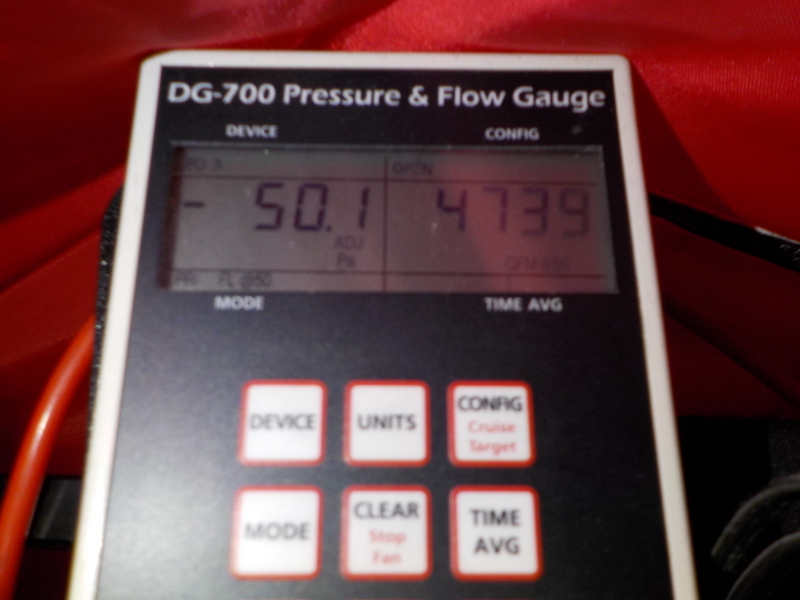
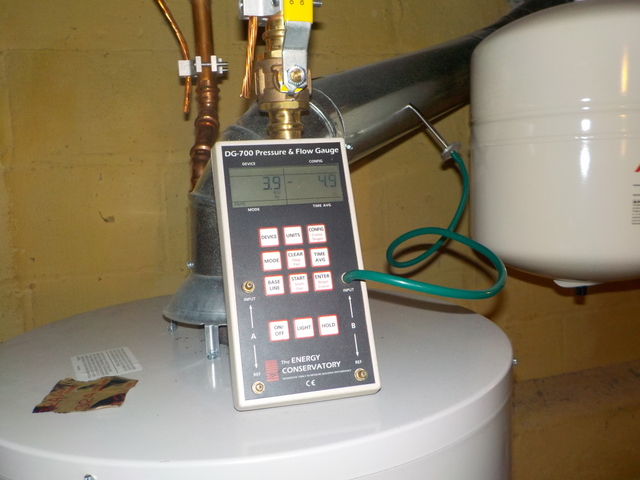
I asked John a myriad of questions while he worked and found him to be extremely knowledgeable both about his work and about how issues can be addressed.
About a week after the assessment, I received a detailed report from Ciel with specifics about my house and recommendations. It was worth noting that the software used to determine potential energy savings was created by the State Home Performance with Energy Star program, which also offers rebates and interest-free financing. Then Natalie, the Ciel rep for Summit, came to our house one evening to go over the report. Natalie is so nice, and not at all pushy about trying to get you to have Ciel do the work. You get to keep the report, and YOU choose whether or not you want to do anything, either using Ciel or any other certified contractor. You can do nothing, just some things, or everything. It is entirely up to you.
We are having Ciel do work for us, comprised mainly of adding insulation and air sealing around windows and doorways. Our house is leaky enough for us to qualify for the $4,000 rebate, and the interest-free financing. And our estimated utility savings from having the work done is about $1,000 per year.
I would be happy to answer any questions you have about the assessment or the program in general. Feel free to contact me at beth.t.lovejoy@gmail.com .
Beth Lovejoy
Live in Summit? Get started with Summit's Home Energy Insight program.
The best way to get to know where to start with energy-efficiency improvements is to schedule a Ciel Home Energy Audit.
Questions? Our reps have answers. (201) 632-3463
This Mayor Hopes To Inspire Homeowners Across Her City
Mayor Nora Radest of the City of Summit opens her home to the Ciel team, members of the media, and a film crew from Summit's local television station to launch Summit's Home Energy Insight campaign.
Mayor Nora Radest of the City of Summit opens her home to the Ciel team, members of the media, and a film crew from Summit's local television station to launch Summit's Home Energy Insight campaign.
Like community leaders across New Jersey, City of Summit Mayor Nora Radest has a gift for managing her busy schedule. On this day, briefly interrupted to officiate a wedding ceremony for a local couple, Mayor Radest opened her home to almost a dozen people to facilitate, produce, perform, film, report, and oversee one of the first Home Energy Audits taking place as part of Summit's newly launched Home Energy Insight program.
Here's just some of what John, Ciel's Home Energy Auditor, focused on during his time at Mayor Radest's home.
John Closely examined a crawlspace beneath a recent addition to inspect its ventilation, insulation levels, moisture levels, and to examine the condition of the ducts running through this unconditioned space.
A natural gas leak detector was calibrated outdoors, then brought inside to examine exposed gas lines for potential gas leaks.
An examination of the heating and hot water equipment utilizing specialized diagnostic tools was performed to ensure that the exhaust generated by these units was being properly evacuated, that chimney's draft pressure was within Its required ranges, and that excessive levels of carbon monoxide that might pose a danger to the occupants of the home was not present.
With the help of a thermal imaging camera that easily discovers temperature differences, John was able to inspect the exterior walls to determine the effectiveness of the insulation located inside the wall cavity.
A thorough inspection of the attic of Mayor Radest's home was performed to determine how much "stack effect" may be occurring inside the home during the colder winter months.
Finally, John measured the specific amount of air-leakage occurring within the home to understand how air-infiltration rates may be contributing towards comfort issues or excessive energy consumption.
If there is something that significantly contributes towards the overall energy consumption of the home, a home energy audit will likely cover it.
City of Summit Mayor Nora Radest looks on as Ciel measures the air-infiltration of her home.
Summit's Home Energy Insight program, created to promote awareness of practical resources available to residents of the City of Summit, offers Summit homeowners a reduced rate of $49 on Ciel Home Energy Audits. The program also connects Summit homeowners with incentives available through the 2016 New Jersey Home Performance with Energy Star program which is currently offering New Jersey homeowners up to $4,000 worth of cash-back incentives, and up to $10,000 worth of zero-interest financing or up to $15,000 worth of low-interest financing to install energy-efficiency upgrades. As a participating provider of the NJ Home Performance with Energy Star program, Ciel will facilitate the installation of upgrades along with the processing of cash and financing incentives.
Mayor Radest looks on as John demonstrates the capabilities of his thermal imaging camera.
The diagnostic portion of the audit is the first of two visits we'll be paying to Mayor Radest's home, a beautiful home that dates back to the nineteen thirties. During this visit, we'll collect data about the home that will be used by sophisticated software to estimate the projected energy savings of a variety of upgrades available through the New Jersey Home Performance with Energy Star program. This software will prioritize upgrade recommendations based on their overall return on investment and will estimate the specific efficiency gains a homeowner can expect to realize after the upgrades have been installed. These upgrades, when installed, will save up to thirty percent on the home's energy consumption and will significantly improve the home's overall comfort and energy-efficiency.
Thermal imaging is used to identify weaknesses in a home's thermal envelope.
During our next visit to Mayor Radest's home, we'll deliver a customized report that highlights the findings of her home energy audit in an easy-to-understand format. This report will highlight any health and safety concerns that might have been discovered during the assessment, information about the efficiency of the home's mechanical equipment, weaknesses in the home's thermal envelope, air-infiltration rates, and will provide Mayor Radest with a prioritized list of upgrade recommendations that, when installed, will have a significant impact on the comfort and energy-efficiency of her home. The report contains pricing on each of the recommended measures, along with information about specific cash and financing incentives available to help lessen the financial impact of installing the recommended items.
A device called a blower door is used to calculate a home's air-infiltration rate.
Here's just some of what John, Ciel's Home Energy Auditor, focused on during his time at Mayor Radest's home.
John Closely examined a crawlspace beneath a recent addition to inspect its ventilation, insulation levels, moisture levels, and to examine the condition of the ducts running through this unconditioned space.
A natural gas leak detector was calibrated outdoors, then brought inside to examine exposed gas lines for potential gas leaks.
An examination of the heating and hot water equipment utilizing specialized diagnostic tools was performed to ensure that the exhaust generated by these units was being properly evacuated, that chimney's draft pressure was within Its required ranges, and that excessive levels of carbon monoxide that might pose a danger to the occupants of the home was not present.
With the help of a thermal imaging camera that easily discovers temperature differences, John was able to inspect the exterior walls to determine the effectiveness of the insulation located inside the wall cavity.
A thorough inspection of the attic of Mayor Radest's home was performed to determine how much "stack effect" may be occurring inside the home during the colder winter months.
Finally, John measured the specific amount of air-leakage occurring within the home to understand how air-infiltration rates may be contributing towards comfort issues or excessive energy consumption.
We look forward to updating you on our next visit to Mayor Radest's home. In the interim, if you'd like to schedule a home energy audit, visit our scheduling page or call us at 201-632-3463.
Get started with a home energy audit.
The best way to get to know where to start with energy-efficiency improvements is to schedule a Ciel Home Energy Audit.
Questions? Our reps have answers. (201) 632-3463
Top 10 Reasons to Upgrade Your Home's Insulation
Ciel's Home Performance Consultants offer an insider's look on why Ciel's customers are upgrading their home's insulation.
Architect Gary Rosard Nails Sustainability
While most architects are incorporating energy-efficiency into their designs as an afterthought, there is an increasing number of architects who are incorporating green design techniques utilizing a “whole house approach” to energy-efficiency in the developments, additions, and renovations they design. Known for comfortable modern homes and stunning interior design, Gary Rosard designs projects from his office on Millburn Avenue in Millburn, New Jersey.
While most architects are incorporating energy-efficiency into their designs as an afterthought, there is an increasing number of architects who are incorporating green design techniques utilizing a “whole house approach" to energy-efficiency in the developments, additions, and renovations they design. A growing trend towards the responsible consumption of natural resources and the impact that excessive consumption is having on our health, environment, and quality of life is paving the way for a new generation of socially responsible clients seeking the services of professionals who prioritize sustainable design and environmental sensitivity at every level of a design/build project.
Known for comfortable modern homes and stunning interior design, Gary Rosard designs projects from his office on Millburn Avenue in Millburn, New Jersey. “Incorporating environmental considerations and resource efficiency into every step of the project to minimize environmental impact is one of the guiding principals of our firm.” says Rosard. “Using a whole house approach when designing is crucial when using green design techniques.”
With extensive experience creating custom homes, Rosard's firm is available to assist with every detail of a project including interior design. “We consider design materials for their beauty, functionality, energy-efficiency, and for their health impact,” says Rosard. “Whether the project is a new house, an addition, or a remodel, our mission is to create your perfect home, and to guide you through the decisions that are involved in a construction project.”
Known for his effervescent personality and energetic presentations on “Healthy Homes” to newcomers to his hometown of Millburn, New Jersey, Rosard became acquainted with Ciel during the roll-out of Millburn's township-wide home energy audit campaign.
“Getting to have those experiences on my own home was something special,” said Rosard, referring to his recent experience of participating in the town's home energy audit program. As a LEED AP certified professional, Rosard is familiar with the intricacies of energy-efficiency retrofits, and the results of the home energy audit performed on his 1918 home left a lasting impression.
The incentives available through New Jersey's Home Performance with Energy Star program gave Rosard the long-awaited opportunity to bring today's energy-efficiency standards to a home constructed nearly one hundred years ago. Taking Ciel's advice and running with it, Rosard seized the opportunity to upgrade his home's insulation levels, dramatically reduce his home's air-flow rate, and significantly improve the overall comfort and energy-efficiency of his home.
With Rosard's extensive industry background, the project wasn't as much a job as it was an opportunity for collaboration. Before any work was scheduled, he began with a step not offered by many providers: a top-down walk through of the home. “When two professionals come together, you're bouncing ideas off each other and this collaboration allows us to connect at a another level.” he says. “Together we created a detailed work scope using green products that were important to us.”
Even as the work began on his home, Gary Rosard's passion for sustainability and building design allowed him to appreciate the efforts being made by the Ciel crew to upgrade his home. The air-sealing being done throughout the home, the insulation being added to his attic and beneath the shingles of his exterior walls, and the addition of spray foam to his basement rim-joist would combine to dramatically improve the comfort and energy-efficiency of his Millburn home.
“At Gary Rosard Architect we are focused on quality construction that will help you to minimize home energy consumption, and provide a healthy indoor environment”
Why Is My Addition Always Cold? Five Ways To Improve The Comfort of Your Addition
For those who have a great room, kitchen addition, or bathroom addition, fall is often the beginning of a long stretch of comfort issues – no amount of space heating, blankets, or extra sweaters seem to provide the comfort necessary to truly enjoy these newer spaces. That's why we dove deep into our bench of experts to find the top five causes of comfort issues in new additions; and what can be done to improve comfort in your home's addition. We've prioritized the recommendations from least invasive/difficult to most invasive/difficult, but one thing's for sure – these improvements, when installed, will have a dramatic impact on the overall comfort of these spaces.
For those who have a great room, kitchen addition, or bathroom addition, fall is often the beginning of a long stretch of comfort issues – no amount of space heating, blankets, or extra sweaters seem to provide the comfort necessary to truly enjoy these newer spaces.
That's why we dove deep into our bench of experts to find the top five causes of comfort issues in new additions; and what can be done to improve comfort in your home's addition. We've prioritized the recommendations from least invasive/difficult to most invasive/difficult, but one thing's for sure – these improvements, when installed, will have a dramatic impact on the overall comfort of these spaces.
Install Retrofit Light Kits
As it turns out, replacing the outdated incandescent high-hat (recessed lighting) light bulbs in the ceiling of your addition with energy-efficient LED retrofit kits may have more benefits than you might have originally thought.
Unless your home's addition was constructed in the last few years, it's unlikely that the fixtures in your ceiling are ICAT rated (insulation contact/air-tight). As a result, the light fixture's ventilation system is directly connected to your roof's ventilation system, and the two systems work together to pull warm air from your living spaces during cold winter months.
During winter months, additions are often the most uncomfortable spaces inside a home.
LED retrofit bulbs are often sold with a bulb and replacement housing manufactured together as one unit, designed to replace both the light bulb and the surrounding plastic housing located inside of the fixture. LED bulbs exude a fraction of the heat of their incandescent counterparts and therefore, do not have the same ventilation requirements as incandescent bulbs. As a result, the solid one-piece housing of the replacement unit acts as an air-barrier, preventing warm air from entering the roof's ventilation assembly and escaping outside. The result; warm air stays contained within the room and comfort is significantly improved.
Install A Ceiling Fan
Often times, ceilings in the addition are significantly higher than ceilings located throughout the rest of the home causing warm air to get “trapped” in these higher elevations. It may seem counter-intuitive, but the addition of a ceiling fan to these areas will help distribute warmer air more evenly throughout the living space.
Air-Seal Upper Levels
During winter months, the heating system in your home transfers energy stored inside its fuel to the air molecules floating throughout your home. These newly “energized”, (warmed) molecules are much more active and excited than their colder counterparts and, much to the chagrin of homeowners all over the world, will expend all of their new-found energy in the pursuit of a violent escape from your home.
These warmer air molecules, excited from the molecular “charge” they received from your home's heating system, are on a singular mission to escape into colder space. These single-minded molecules pursue every avenue including; electrical penetrations, plumbing penetrations, gaps in your home's construction, and attic access points. The tremendous volume of air escaping through even the smallest of penetrations is easy to observe by entering a cold attic, locating a penetration (typically a recessed light), and simply putting your hand above the penetration. It's easy to imagine the totality of the conditioned air escaping through the collective sum of these penetrations across the attic plane.
As warmer air escapes through the upper regions of the home, the convective process is naturally drawing replacement air into the home through penetrations and gaps in the home's basement and crawlspaces. Since additions are typically constructed over unconditioned crawlspaces, the extreme temperature difference of unconditioned replacement air on cold days quickly exacerbates existing comfort issues. Air-sealing gaps and penetrations in the upper regions of your home will slow the convective process and improve comfort in your home's lower levels.
Crawlspace Insulation/Encapsulation
How to improve the comfort and energy efficiency of a home addition.
The construction of additions over concrete or dirt crawlspaces is a common practice among builders and developers. Regrettably, comfort issues in the living spaces located above these areas are almost an equally common phenomenon. These areas often have either little or no insulation and to compound the issue, are often ventilated directly to the outside.
During winter months, the naturally occurring convective process pulls damp cold air and other impurities from the crawlspaces into the living spaces of the home. Installing a vapor barrier to prevent moisture from entering these spaces and adding insulation to buffer extreme temperature differences will improve the comfort and indoor air quality of living spaces located above crawlspaces.
Attic slope insulation
Additions, particularly those with cathedral ceilings, are often improperly insulated. Building codes in many municipalities have evolved to require proper insulation, regrettably not before tens of thousands of additions were constructed without the benefit of updated code requirements.
The cathedral ceilings installed in countless additions are often connected to the outside on both ends through soffit and ridge ventilation designed to ventilate moisture from these spaces. The fiberglass insulation often used inside these cavities is not effective when installed in this type of “vented” assembly.
An easy way to understand this phenomenon is to blow on a piece of fiberglass insulation while holding it in your hand. As you can see, your breath is not impeded by the fiberglass insulation and can be easily felt on the palm of your hand beneath the insulation. The same effect exists on windy days as cold air moves freely thought these cavities.
Retrofitting with dense-packed cellulose or spray foam insulation will dramatically improve insulation performance in these areas.
Improving the comfort of your addition is the name of the game. Start with the easier improvements and work your way into some of the more difficult ones. Be sure to ask the advice of professionals as you get into the more complicated measures we've recommended.
A Ciel Home Energy Audit will pinpoint the cause of the discomfort in your new addition and our skilled Home Performance Consultants will work to leverage state and federal incentive programs to keep the project budget-friendly. Experienced technicians will install the insulation and air-sealing measures that will have the biggest impact on the overall comfort and usability of your space so the space inside your addition is just as comfortable as the rest of your home.
Top 5 Reasons To Get a Home Energy Audit

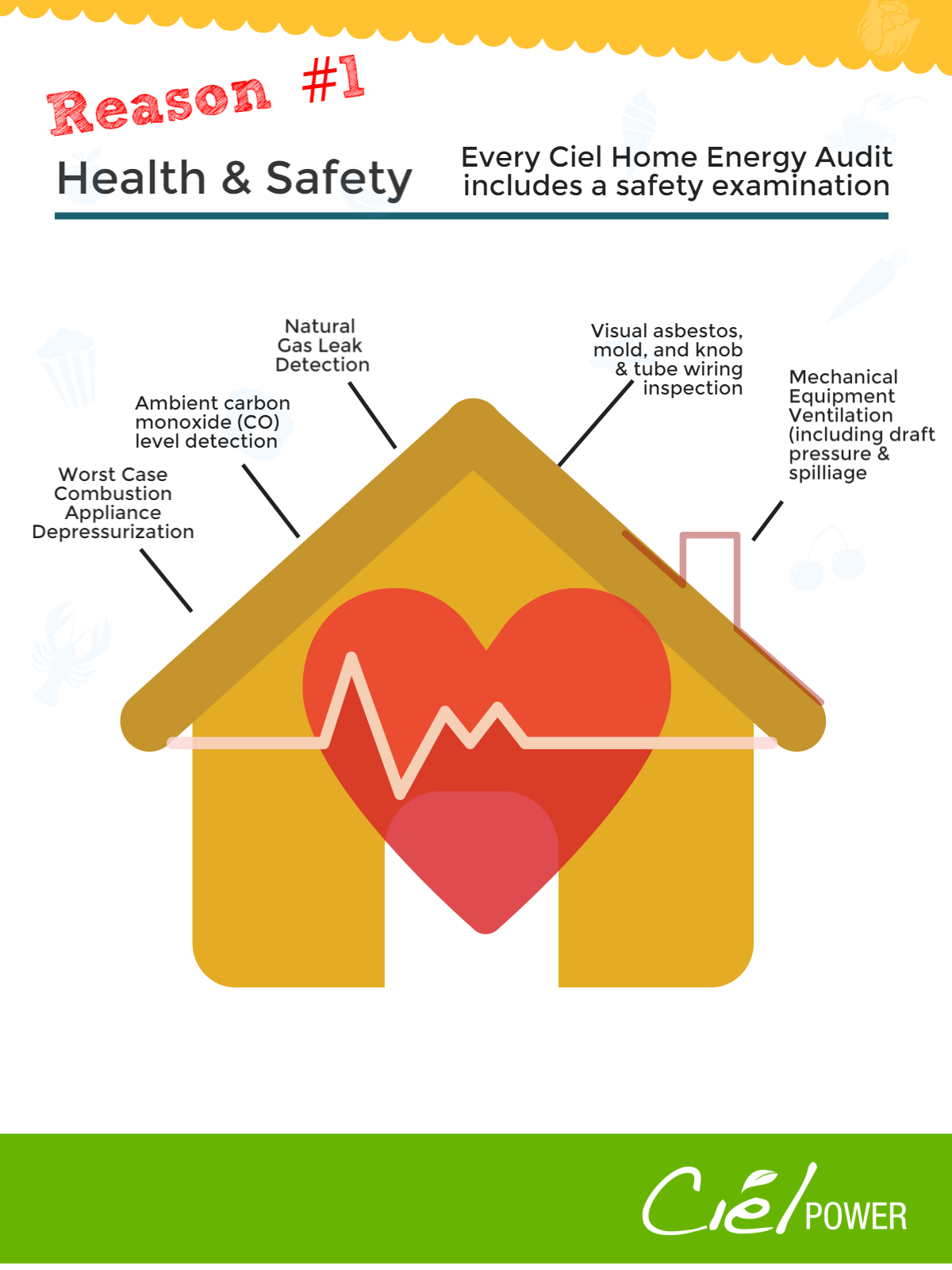


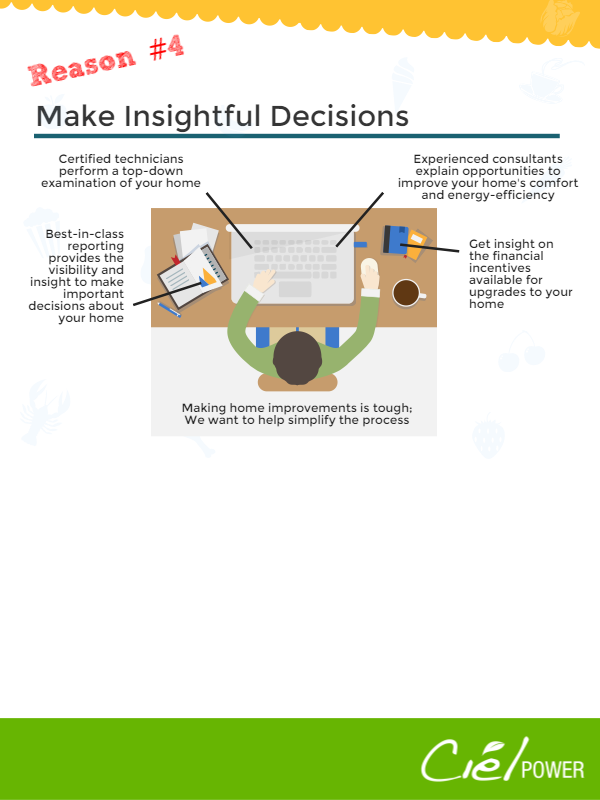
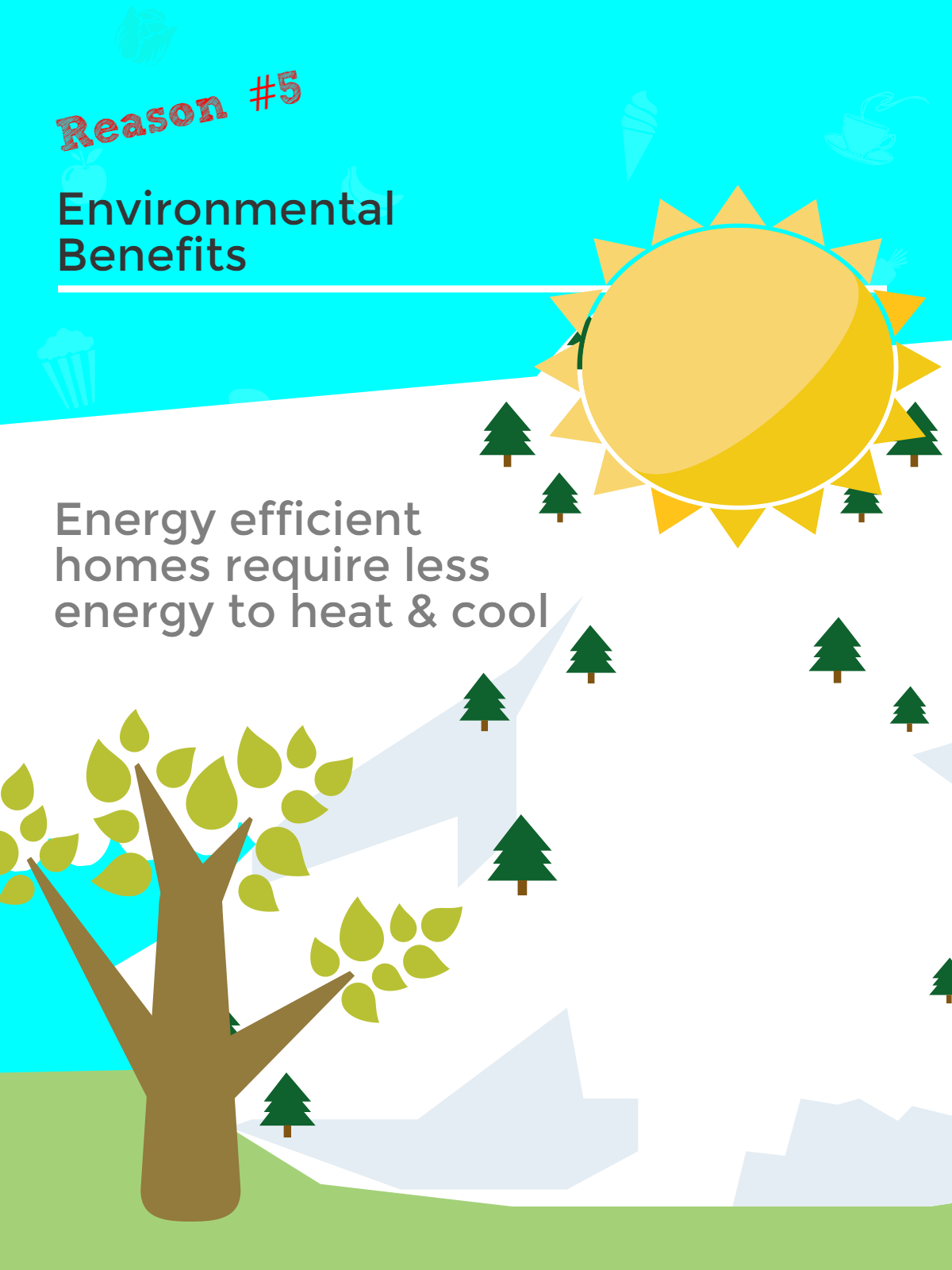
A Ciel Home Energy Audit may only take a few hours, but this first step towards additional comfort, energy-efficiency, and lower operating costs make it rival those of almost any other home improvement pursuit. From Martha Stewart, to Consumer Reports magazine and the US Department of Energy, a home energy audit is on the short list of every industry professional.
10 Surefire Tips To Improve the Comfort and Energy Efficiency of Your Home
From staying warm and comfortable on cold winter nights to managing energy costs as part of a household budget, these professional tips are guaranteed to bring comfort and energy-efficiency to your home:
From staying warm and comfortable on cold winter nights to managing energy costs as part of a household budget, these professional tips are guaranteed to bring comfort and energy-efficiency to your home:
1) Air-Sealing
Often overlooked, air-sealing is the most important part of a properly insulated home. Seal plumbing and electrical penetrations, top plates, vent stacks, and any other penetrations that might allow conditioned air to escape from the home.
2) Prioritize Your Attic
If you only insulate one part of your home, make the attic your priority. Proper attic insulation will make a noticeable difference in the comfort level of your home during winter and summer months.
3) Don't Forget The Basement
During cold winter months, convection causes cold damp air to be pulled in through the lower level of your home. Properly insulating the rim joist of your home will slow the convection process and improve comfort and indoor air quality.
4) Exterior Walls
Exterior walls represent the largest volume of square footage exposed to the elements in most homes. Properly insulating the exterior walls of your home will yield a tremendous comfort and efficiency benefit. Choose a professional experienced with working with your siding type.
5) Choose Materials Wisely
Selecting insulation materials can be a daunting task. Seek out products containing natural and recycled ingredients. Products that offer higher R-values per inch as well as resistance to air movement are preferable.
6) Insulate To Proper Levels
Preferred insulation levels vary throughout the country. In the northeast, the Building Performance Institute recommends R-50 on the attic flat, R-38 on the attic slope, and R-13 in exterior walls.
7) Safety First
Before air sealing and insulating your home, have a certified professional examine the combustion appliances in your home (heating system, hot water heater, and stove) to ensure they are exhausting properly and CO levels are within proper ranges.
8) The Construction of Your Home
Check out the construction of your home before beginning an insulation project. Older homes often have "balloon framing" which means a dime dropped from the attic will often land on the basement floor. Block off these voids to prevent insulation from escaping its intended placement.
9) Be Aware of Potential Hazards
Examine the different systems in your home to determine if insulation may cause an adverse effect. Do you see "knob and tube" type wiring? Don't insulate it. Is your furnace using a wall cavity as a supply air duct? Don't insulate the cavity. Closely examine the areas you are insulating to ensure there are no unwanted consequences to your insulation project.
10) Recessed Lighting
Your recessed lighting is likely acting as a chimney, providing a conduit for conditioned air in your home to escape to the outdoors. There are a variety of products on the market specifically designed to block this type of air transfer. Consider installing these products during your insulation project. Other sources include upgrading housings to newer ICAT (insulation contact air tight) versions, or installing LED retrofit kits to slow the transfer of air. Don't apply insulation in direct contact with recessed lights unless your fixture is IC (insulation contact) rated.
Conclusion
Hopefully these 10 tips have inspired you to upgrade your home's insulation. Remember to properly air-seal beneath any newly installed insulation for maximum benefit.
Have you utilized any of these strategies? Let us know how it went in the comment section below!
Need help with your home? Our Home Energy Audit includes a comprehensive examination of insulation levels in your home along with recommendations and available incentives.
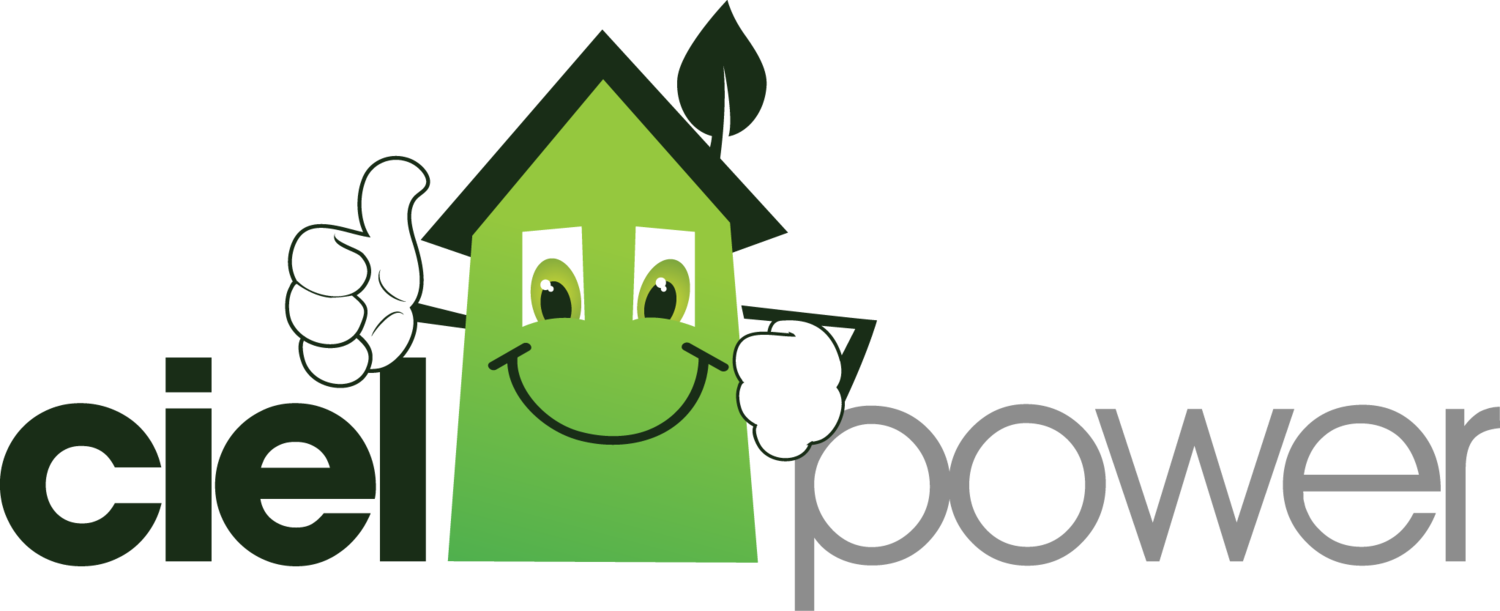




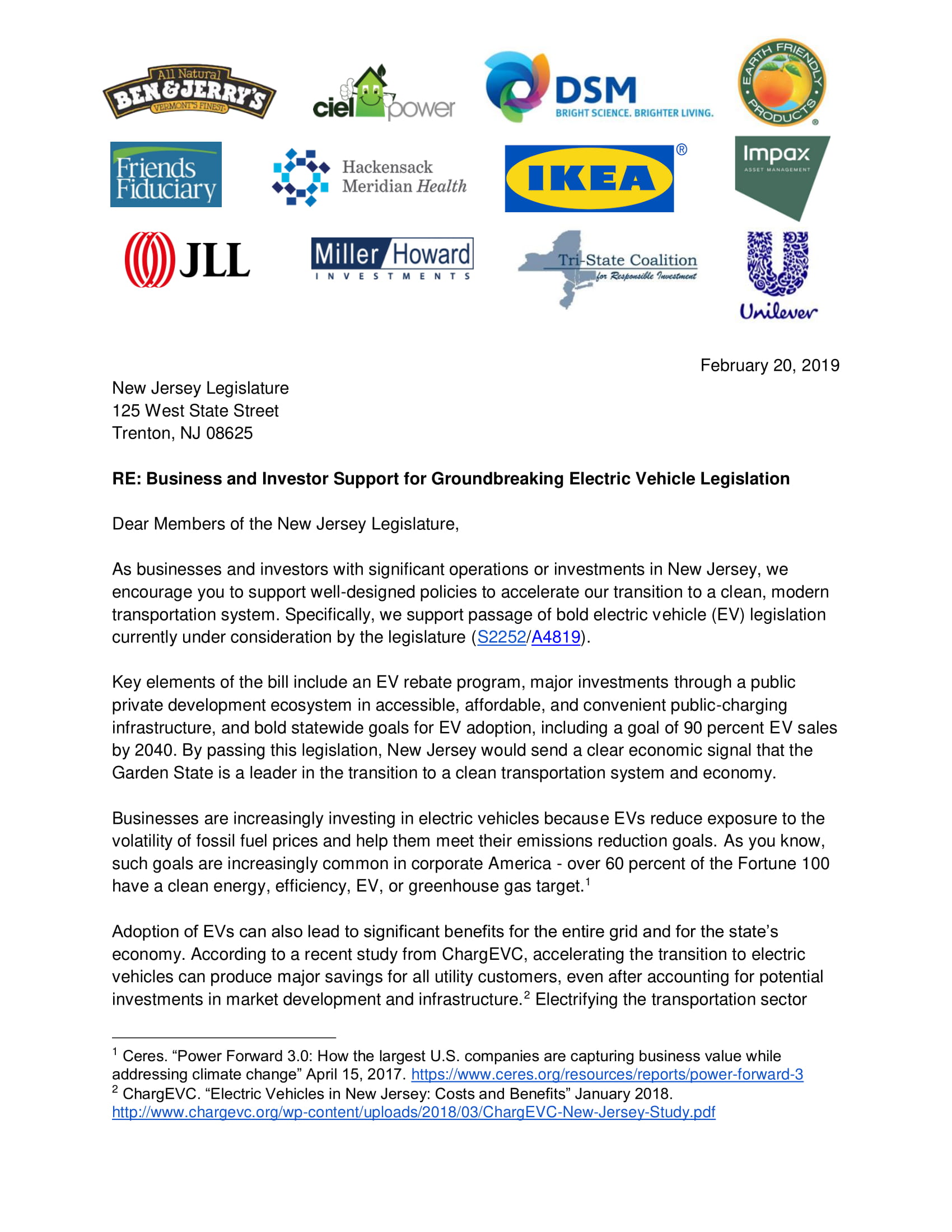
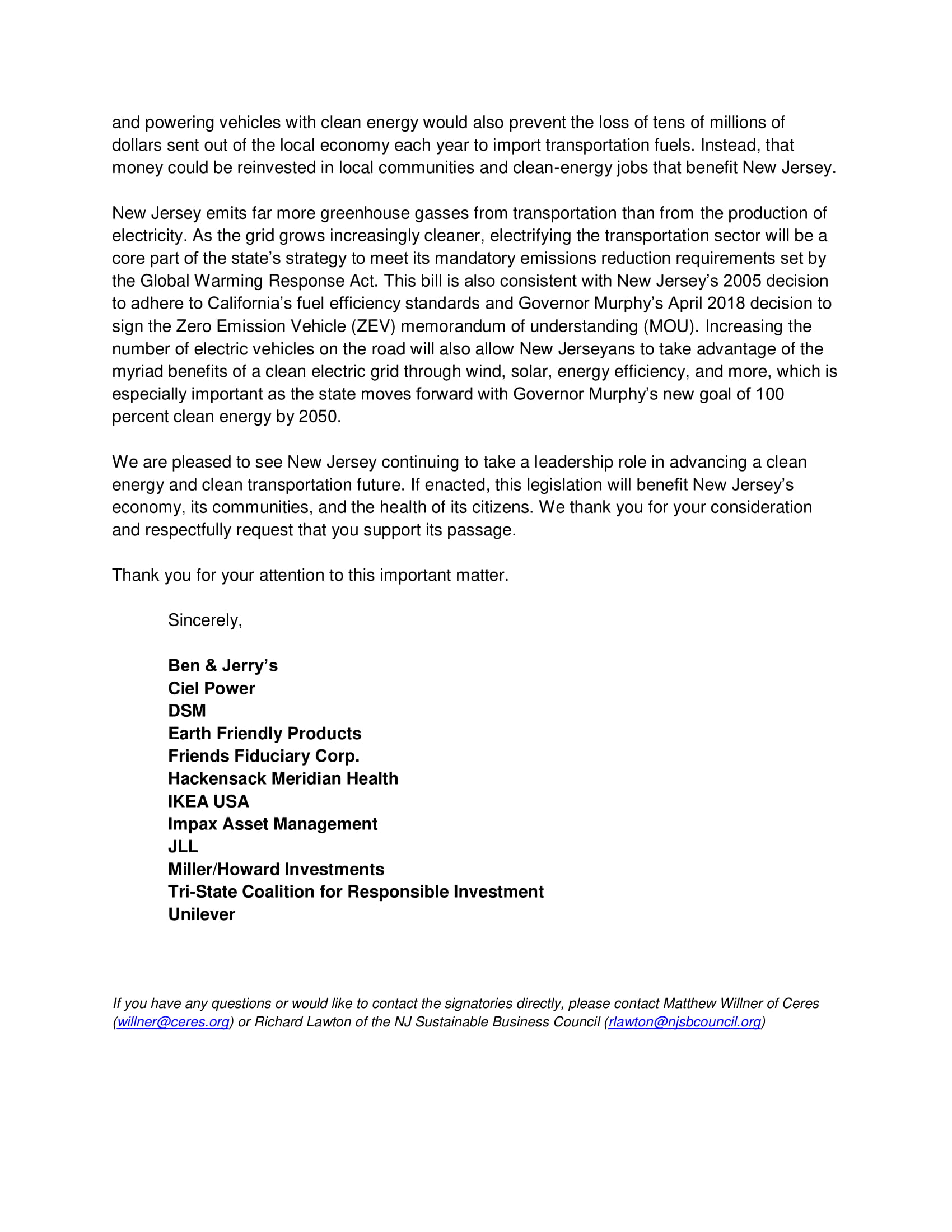





















































![How Rain Gardens Work [And Why You Need One]](https://images.squarespace-cdn.com/content/v1/55b78a58e4b0e36966db31f9/1509820742783-YCI2APGKBWEN9S2Y4SV9/Optimized-IMG_9727.JPG)






